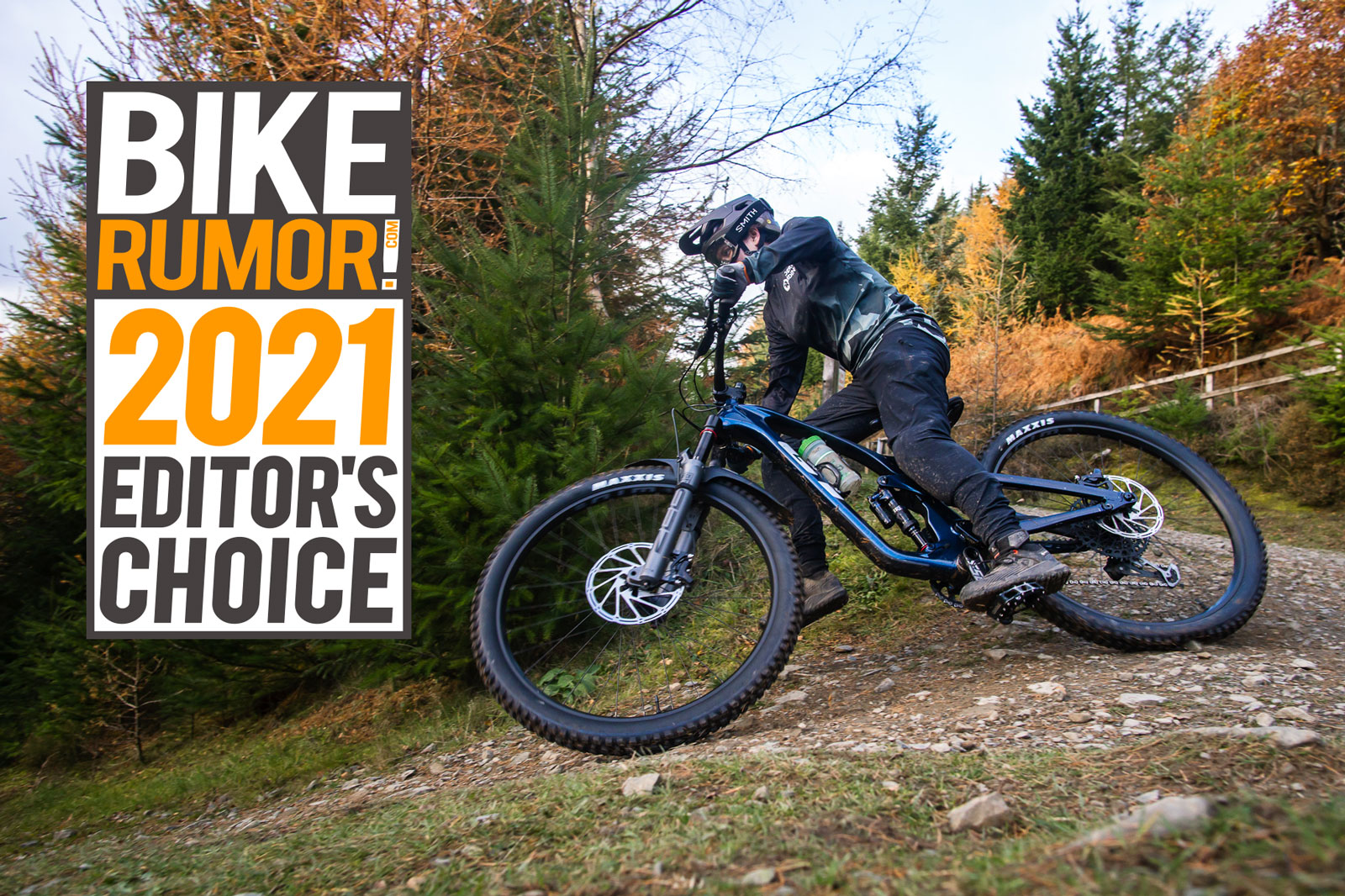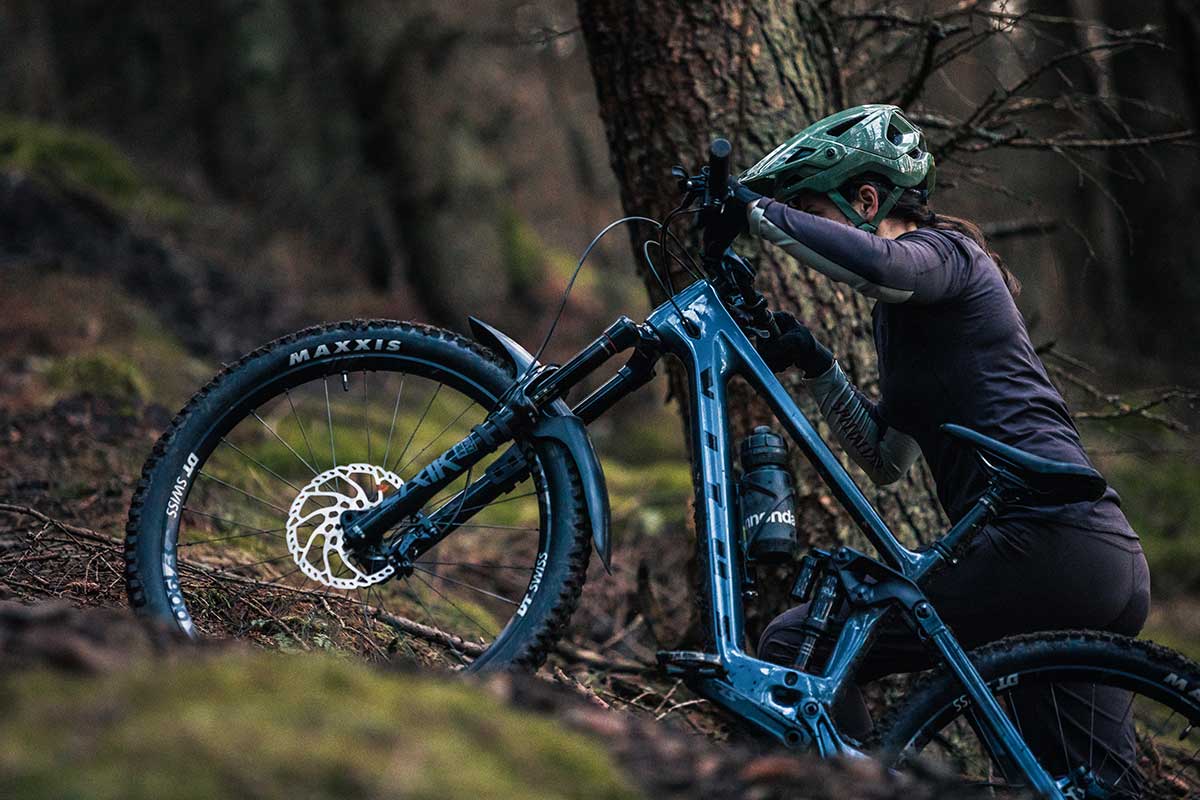I think it’s fair to say that most modern mountain bike frames are actually pretty good nowadays. In my fifteen or so years of riding, I’ve never ridden a bike and promptly said, “Oh my word, that bike is absolutely terrible, no one buy it”. Sadly, the same thing can’t be said for bike components. All too often, a person’s experience of a perfectly acceptable mountain bike is rendered awful by componentry that is, at best, not suited to them personally, and at worst, simply not fit for purpose.
It won’t matter if your bike has a boutique $3,500 full carbon frameset, or a $1,200 alloy frameset, it’ll feel like a bag of spanners if it’s kitted out with a set of unreliable, feeble brakes, tires with flimsy side walls and over-damped suspension tailored to some nameless, average rider of average height, average weight, and average riding ability (i.e., probably not you).
With that in mind…
Here, I have compiled a (not comprehensive) list of components and kit I’ve tested this year that certainly haven’t rendered my overall riding experience as awful. Quite the opposite, in fact. I also have a strong recommendation for those of you who, like me, are no Mr Average.
Feature Image by Blair Kemp
ABOUT JESSIE-MAY
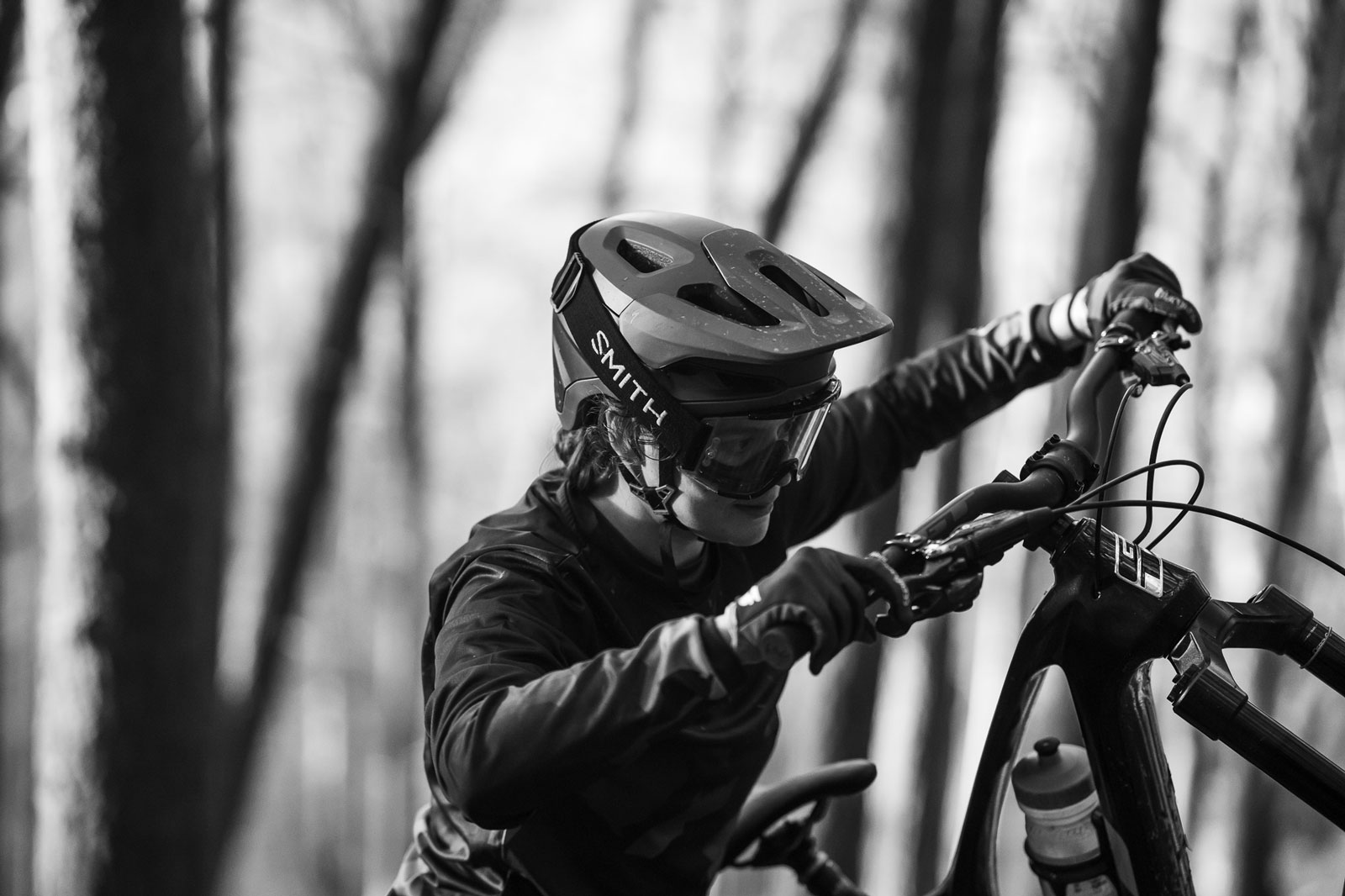
You’ll never catch me wearing Lycra, skinny tyres or not; as a very occasional road rider, I still feel far more comfortable in my baggies, thank you very much. My riding style is predominantly gravity-focused mountain biking. Pedaling is a means to an end; my great love is haring it down hills, attempting to find that balance between riding the bike and having the bike ride me.
I ride and race enduro in the Tweed Valley, Scotland, so when you only see a list of mountain bike recommendations and gift ideas below, don’t say I didn’t warn you.
Products that are pushing the boundaries of what bicycles and riders are capable of earn my respect. It doesn’t have to break the bank, though; if brands are making functional products at accessible price points then credit is due.
EXPERIENCE
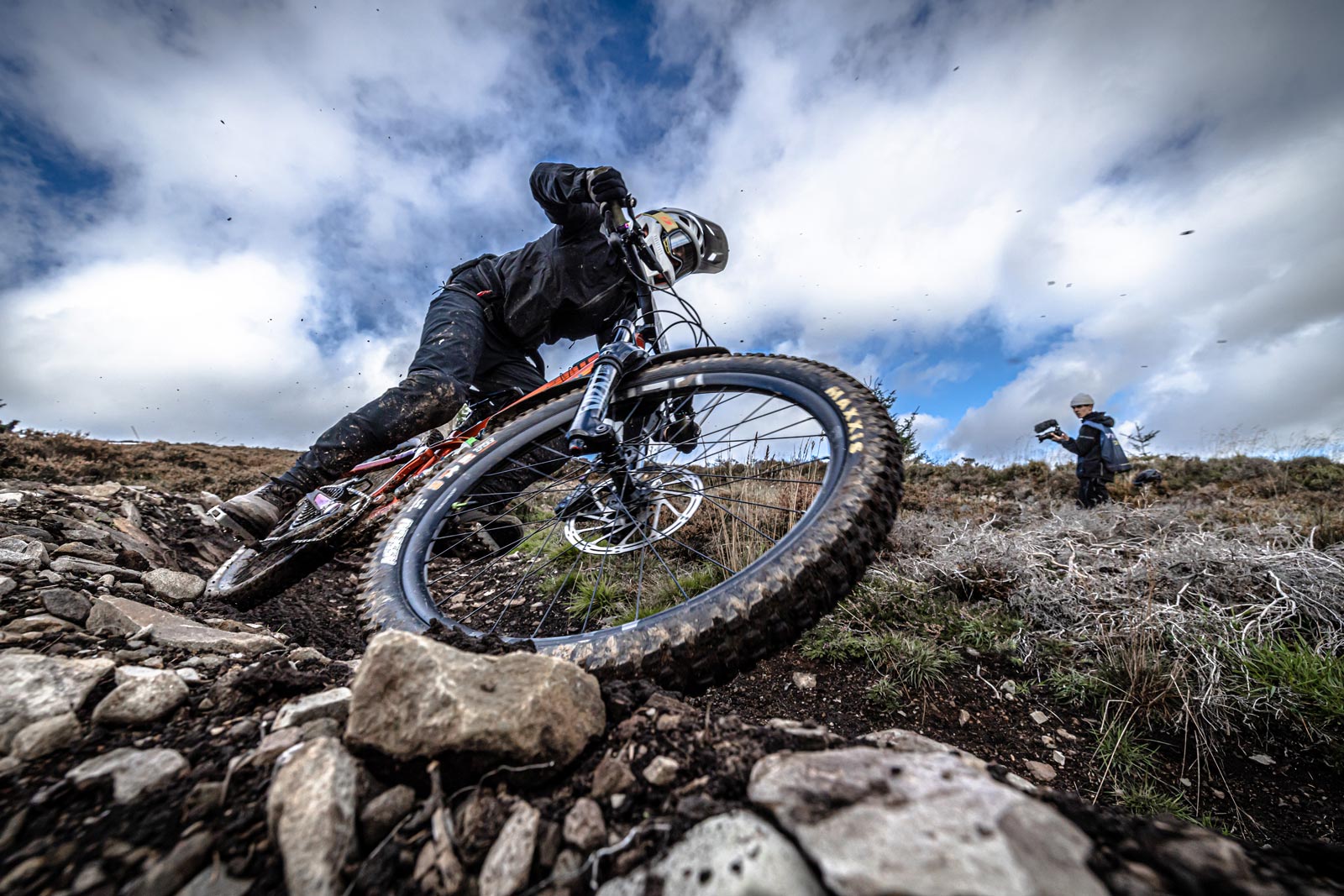
Enduro World Series, Tweed Valley, Scotland
This year I got to race the 2021 EWS Finale in the Pro Category in my hometown of Innerleithen, Scotland. Even though the race saw the slipperiest, sloppiest trail conditions of the year, and even though I two-wheel cased the step up jump at the bottom of Stage 5 and had to pedal up the transition (I’ll take two lawyers, please), it was still an absolute treat to race an international event with all my pals shouting me on from the other side of the tape.
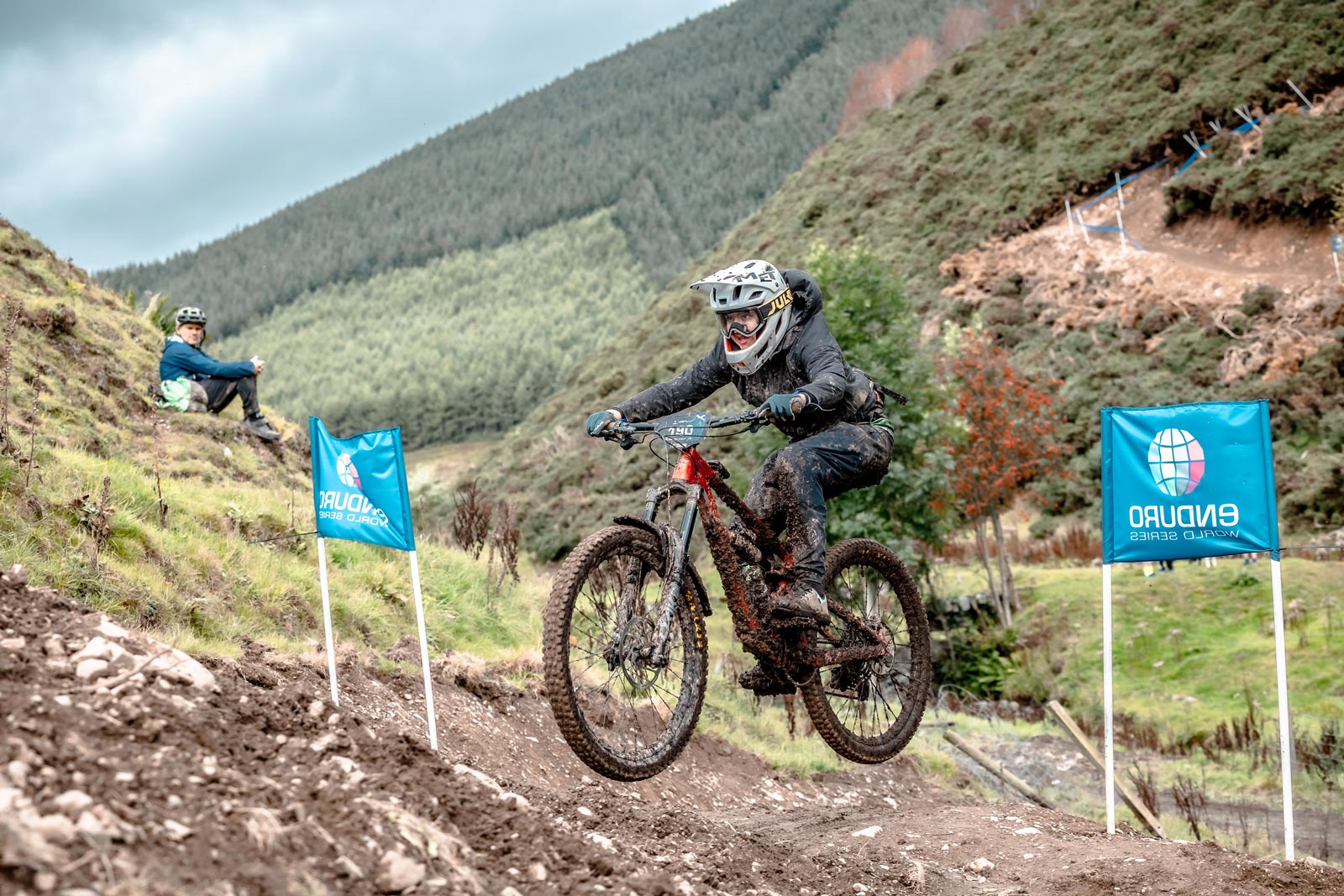
And I posted a faster time than Miranda Miller on the Queen Stage. She may or may not have crashed, we may never know, but I will take that.
The EWS is no longer just for a handful of Pros and the relatively much larger number of qualified Privateers that shell out all their disposable income to simply get to the start line (learn how to qualify for the Pro Category). More recently, entry is open to anyone with a functioning mountain bike, downhill-rated full face helmet, back protector, and who is also proactive enough to be sat at their computer hovering over the mouse the very second entries go live. The EWS 100 offers everyone the chance to race the exact same stages raced by the Pros. The EWS 80 is very similar, but drops what is often considered the gnarliest stage to give less confident riders an opportunity to get amongst it too.
So, if you want to pit yourself against the likes of this year’s Title Winners, Jack Moir and Melanie Pugin, you know what to do… Here you’ll find the dates and locations for the 2022 Enduro World Series.
BIKE
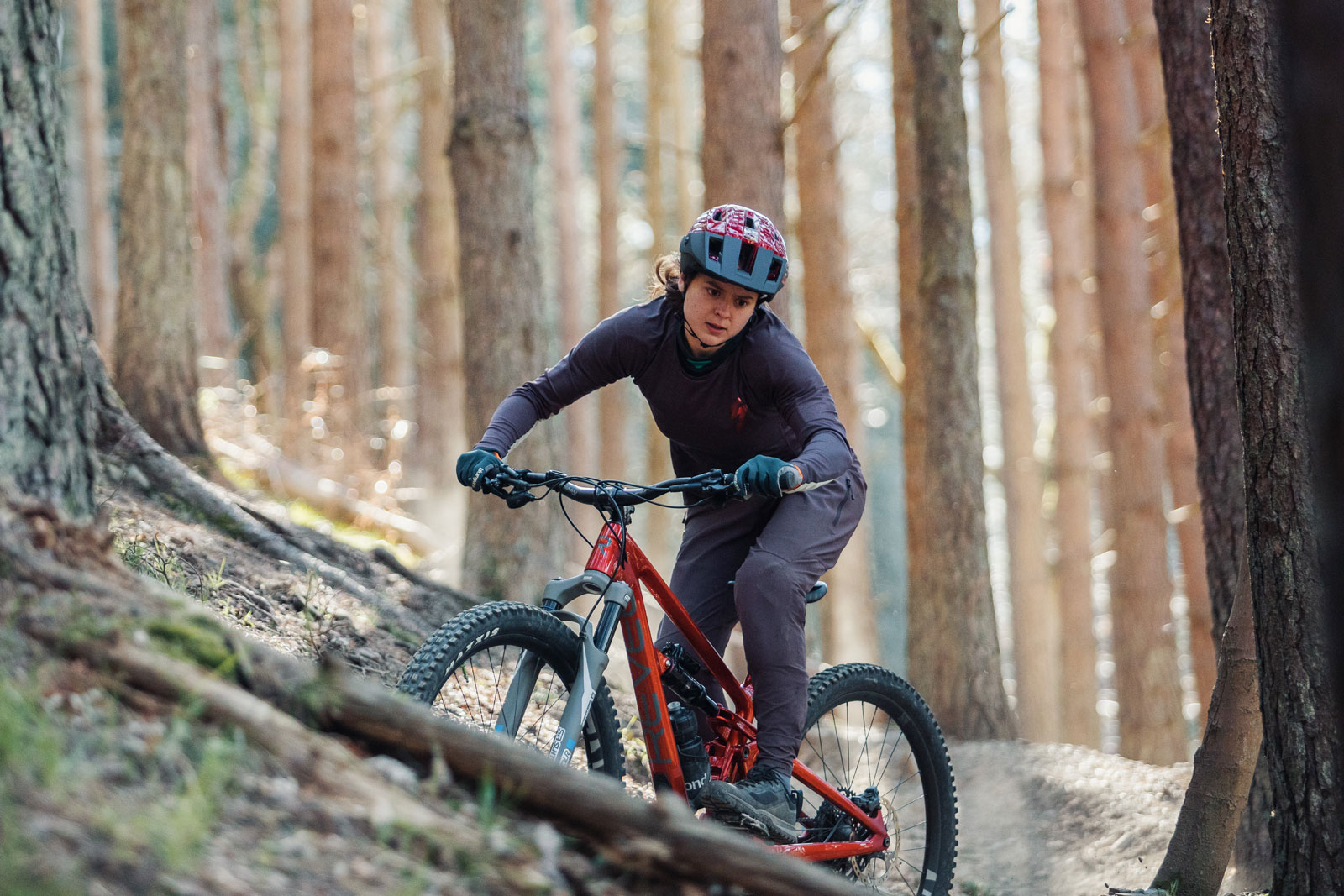
EDITOR’S CHOICE – Revel Rail
By definition, this is my one and only true Editor’s Choice (the one I actually spent money on). The Rail is Revel’s 165mm travel full carbon enduro bike, and it’s the bike I chose to race my 2021 season aboard. A little controversial, in that it rolls on a 27.5″ wheelset but personally I find it works best for me, especially considering my riding style and the character of trails found local to home.
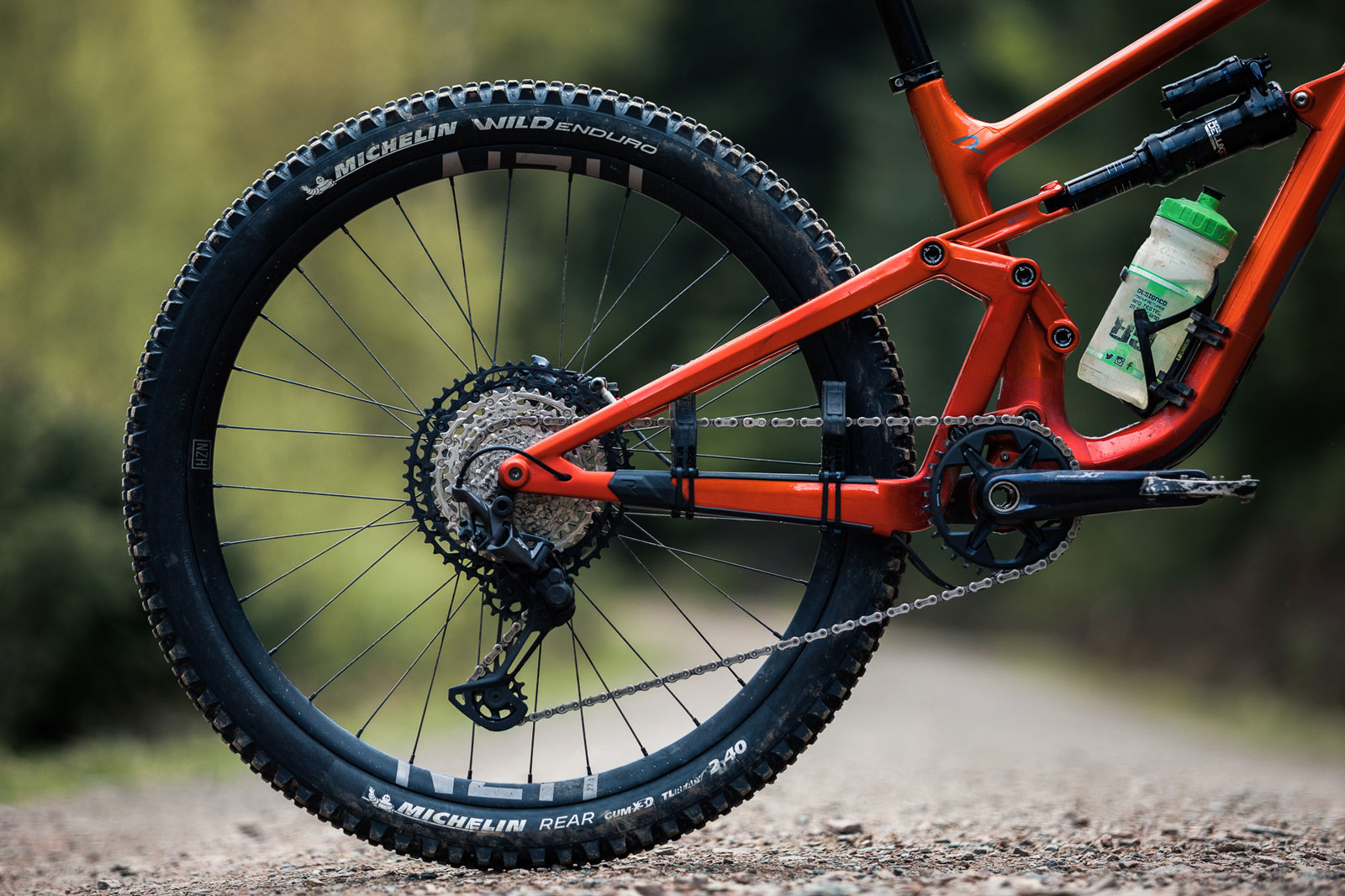
Granted, there are a lot of bearings in there, but the CBF suspension linkage gives rise to a beautifully supple and supportive rear end that just doesn’t get hung up through the chunder. Though quite steep in modern terms, I find its 65° head angle plenty slack enough for the Tweed Valley’s infamously steep enduro trails, though I do think the bike’s seated pedaling position would benefit from a steeper seat tube angle; 75° is a little slack, even when you’re able to slam the saddle forward on its rails.
The Rail is my only personal (mountain) bike; it’s the bike I test most components on, and the bike I race all my events on; from the Glentress 7 Hour Endurance Race, to the Enduro World Series, to the Scottish Downhill Championships at Fort William. Of course, it’s frame design only makes it suitable in the competitive sense in one of those three disciplines.
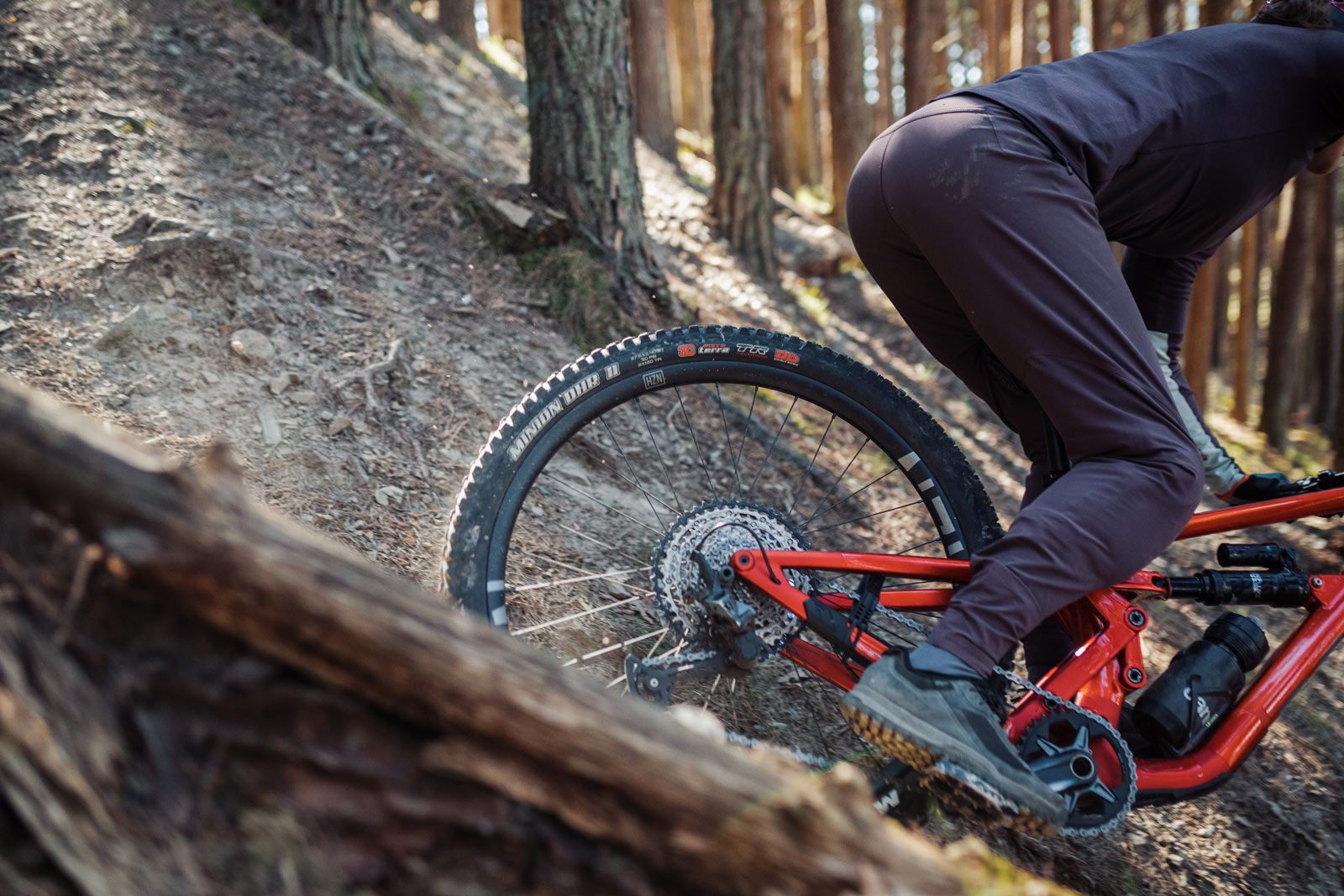
But, the combination of the lightweight frame and the efficient bob-free pedal platform that renders a lock-out lever redundant, make the Rail a very pedal-friendly bike for big days of elevation gain. After a season of abuse, including some inappropriate DH racing, i’m satisfied as to the strength of Revel’s carbon layup, and also grateful for the nicely compliant ride feel, especially by carbon frame standards.
Anyway, I’m rabbiting on; Zach Overholt has also tested the Revel Rail – see his full review here.
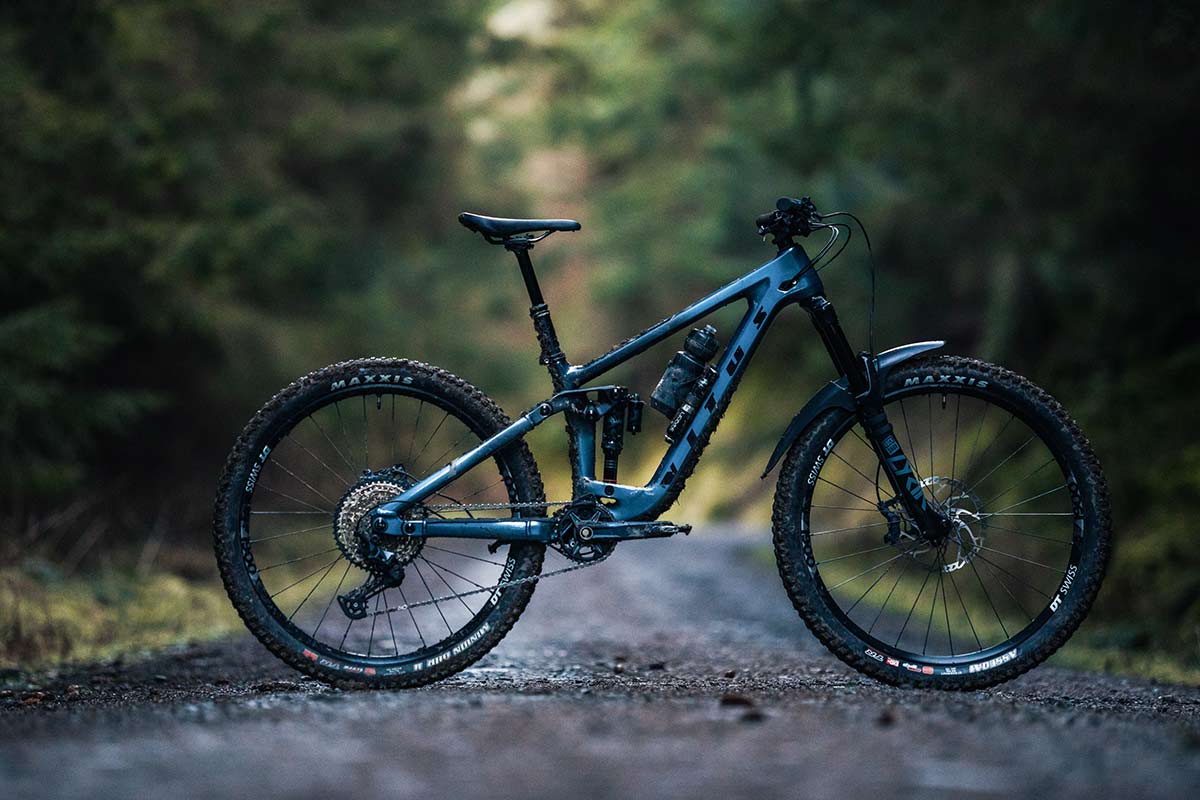
HONORABLE MENTION – 2021 Vitus Sommet CRS 27.5″
I spent the earlier months of 2021 aboard a more affordable mountain bike frame; while the abovementioned Revel Rail frameset with a RockShox Super Deluxe Ultimate shock will set you back $3,299, the complete 2021 Vitus Sommet CRS 27.5″ retails at a price point only marginally North of that, at $3,499.99.
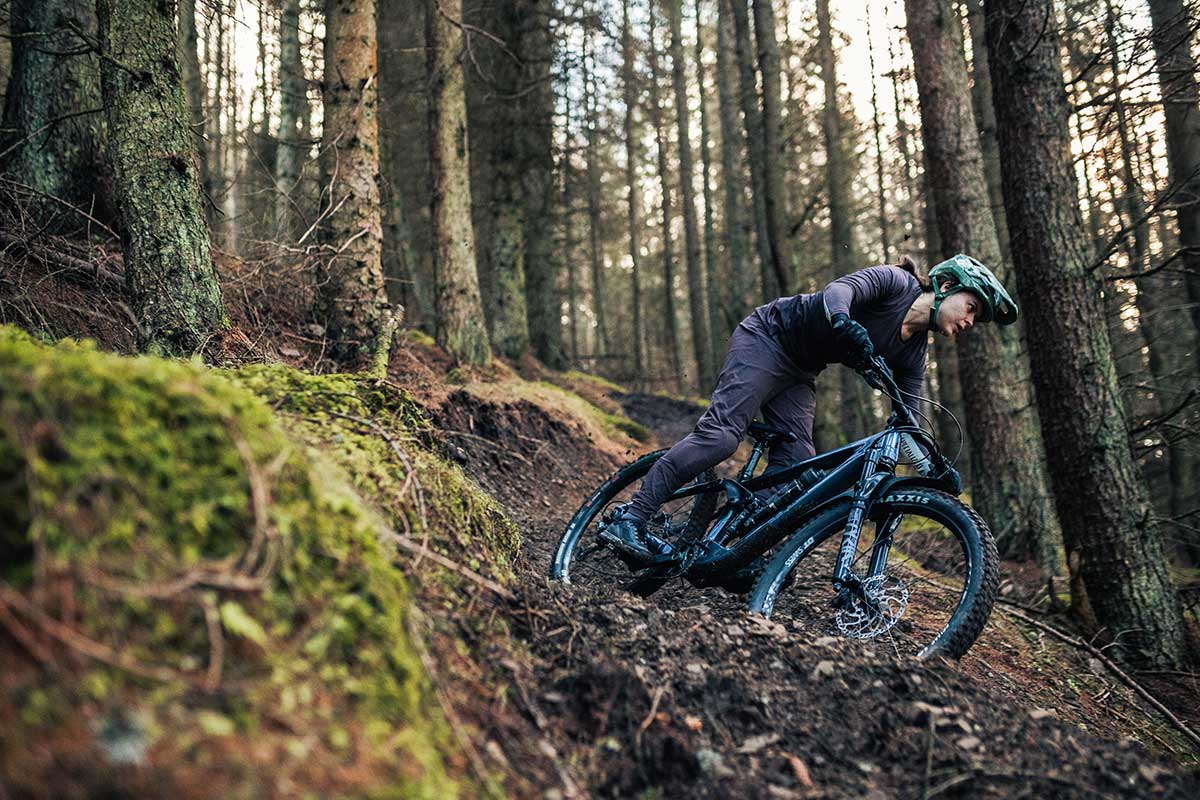
After several months of pedaling countless miles of fire road, wiggling up steep, technical, slippery bits of singletrack, and (the best bit) hauling down the valley’s loamy hand-cut enduro trails, I concluded that the Vitus Sommet isn’t the best bike I’ve ever ridden, but it is by far and away the best value for money.
The Sommet runs a simple Horst-Link suspension platform, with a carbon front end keeping weight down while an alloy rear end keeps things durable and reliable out back. I hadn’t expected such a playful ride feel out of a 170mm travel bike, but that’s what I got, thanks to a quality RockShox Super Deluxe Select+ shock and nice and short 435mm chainstays.
It’s the solid spec list that makes this bike such great value for money; standout highlights were the 170mm RockShox Lyrik Select+ Fork (as you will read below), the plentiful stopping power of the 4-Piston Shimano SLX Brakes, the sturdiness of the DT SWISS E1900 wheelset and the reliable shifting of the Shimano SLX 12 speed drivetrain. I was also grateful that Vitus chose an appropriate DoubleDown casing Maxxis tire for the rear wheel. None of the stock spec needed upgrading; I would have quite happily ridden this bike all year long. You can read my full review of the Vitus Sommet CRS here.
FORK
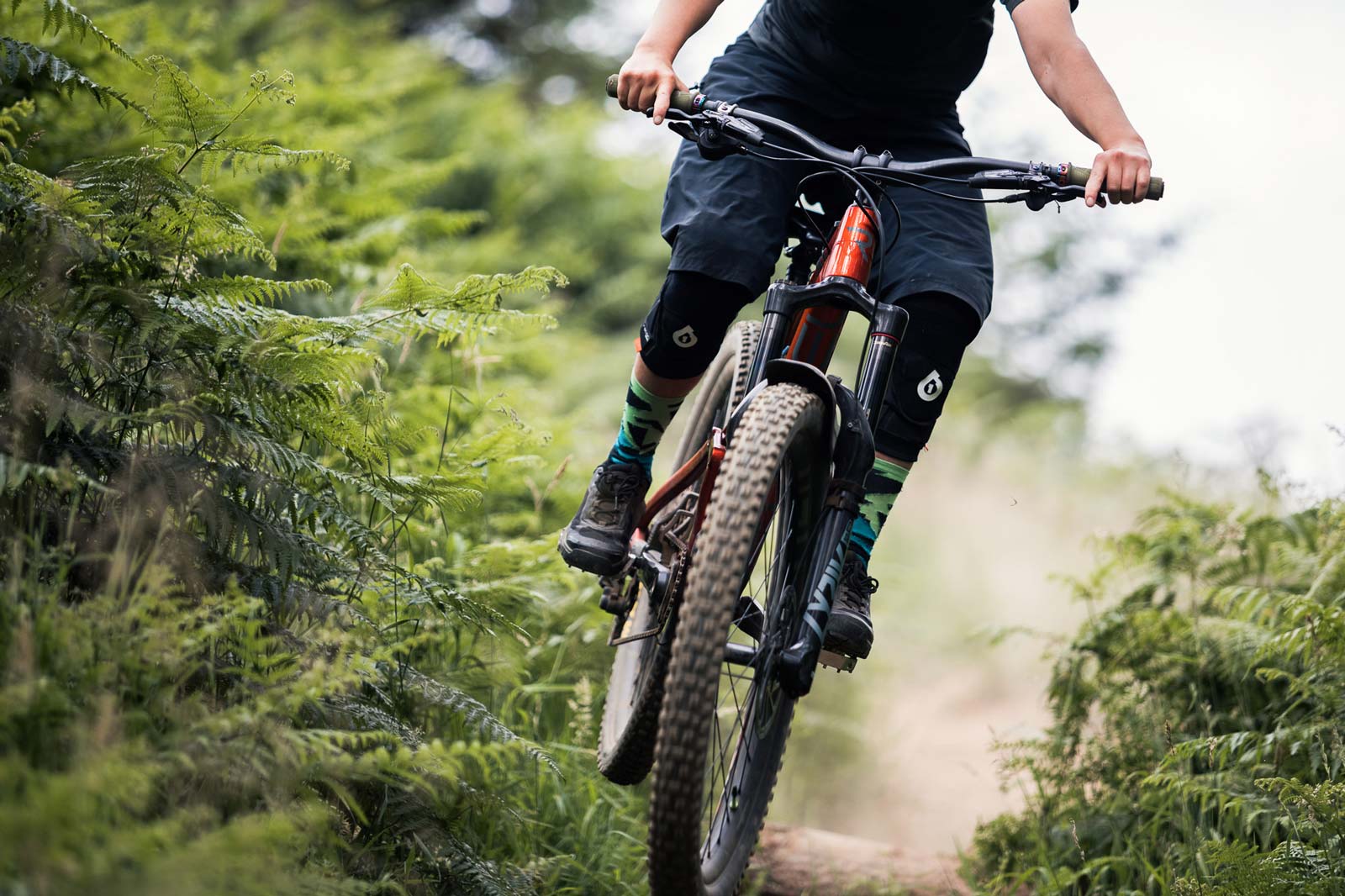
EDITOR’S CHOICE – RockShox Lyrik Select+
When buying a new bike, it can be so tempting to spend that extra $1000 to get the top-end model with the top-end suspension with the top-end dampers. But it has to be said, some of the off-the-shelf mid-range suspension forks are actually pretty impressive in terms of the performance they deliver and the external adjustments they offer. One such fork is the RockShox Lyrik Select+.
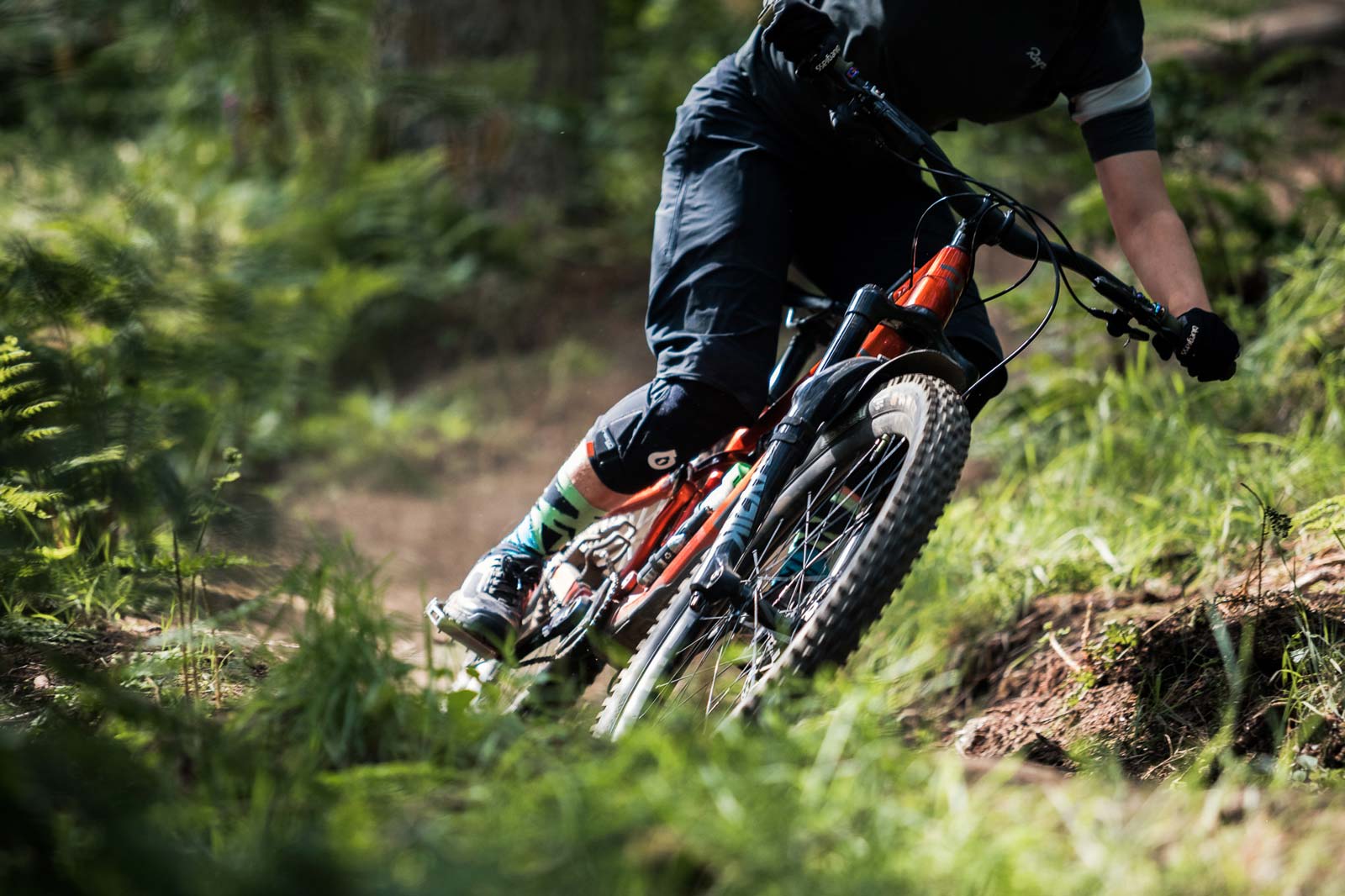
I ran the 170mm 27.5″ Lyrik Select+ on my Revel Rail for the latter half of the 2021 Season. As compared to SR Suntour’s top-of-the-range Durolux 36 (that is actually £5 more expensive), the Lyrik Select+ wins hands down. It is less stiff than the Durolux, with significantly less stiction off the top of the stroke, delivering a much more comfortable ride feel. Though many suspension manufacturers seem to be pushing to increase the stiffness of their forks year on year (note the trend toward larger stanchion diameters) for me personally this offers no performance advantage; I’d go as far as to say a stiffer fork is actually disadvantageous to the lighter, less conditioned rider.
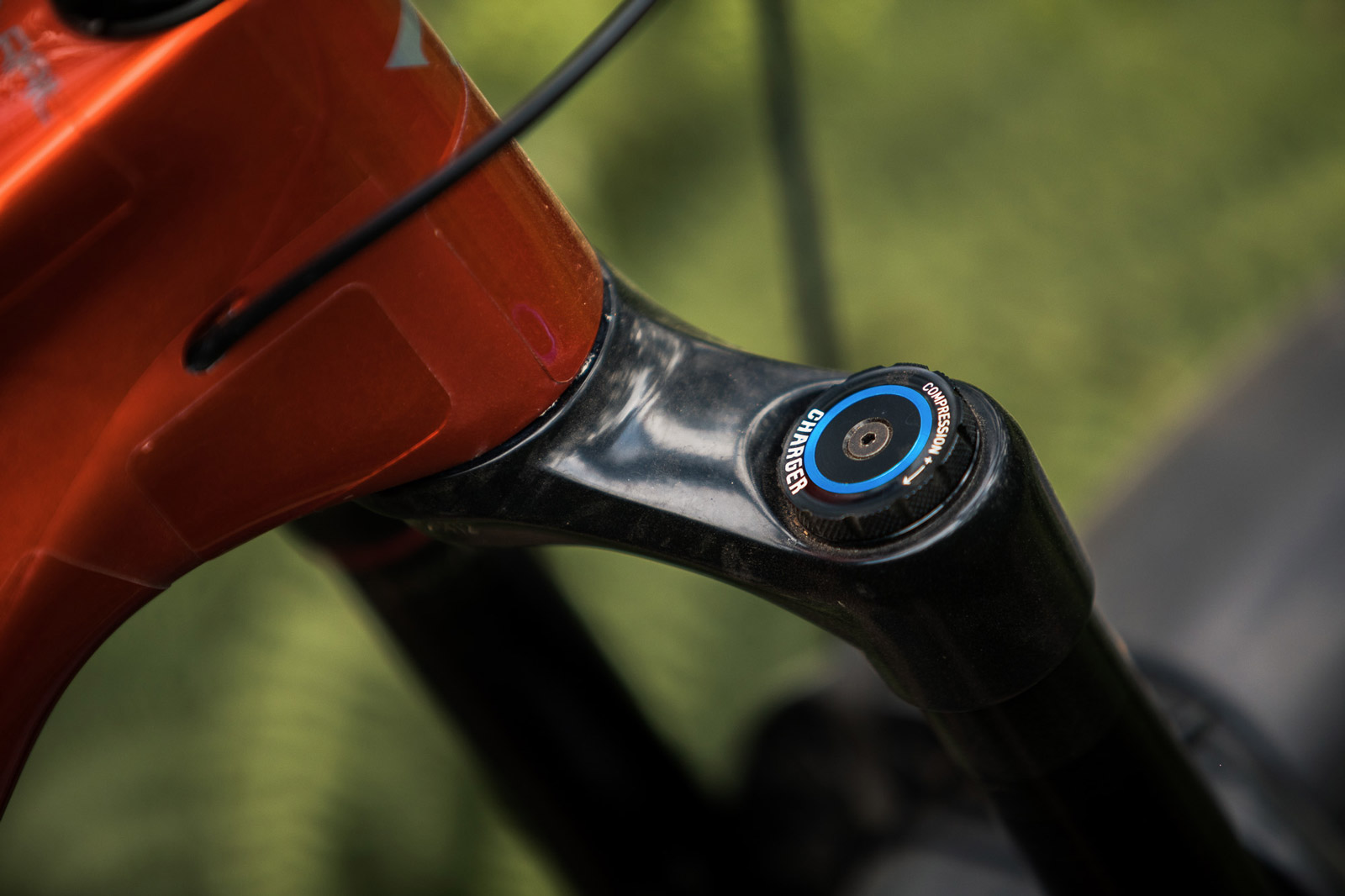
What about the damper? Well, the Charger 2.1 RC damper inside the Select+ fork is actually the same damper as that found inside the Lyrik Ultimate fork; the only difference being is that it lacks the external adjustment for high speed compression damping found on the Ultimate’s RC2 version (and the £971 price tag). Thus, you’ll not be surprised to hear that in blind back-to-back timed test runs, there was no substantial difference between the two; on a 3 minute track, I actually went 1.25 seconds faster on the Select+ damper (timing thanks to the Freelap System, not Strava).
The RockShox Lyrik Select+ for is now on sale at Chain Reaction Cycles for $632.
SERVICES
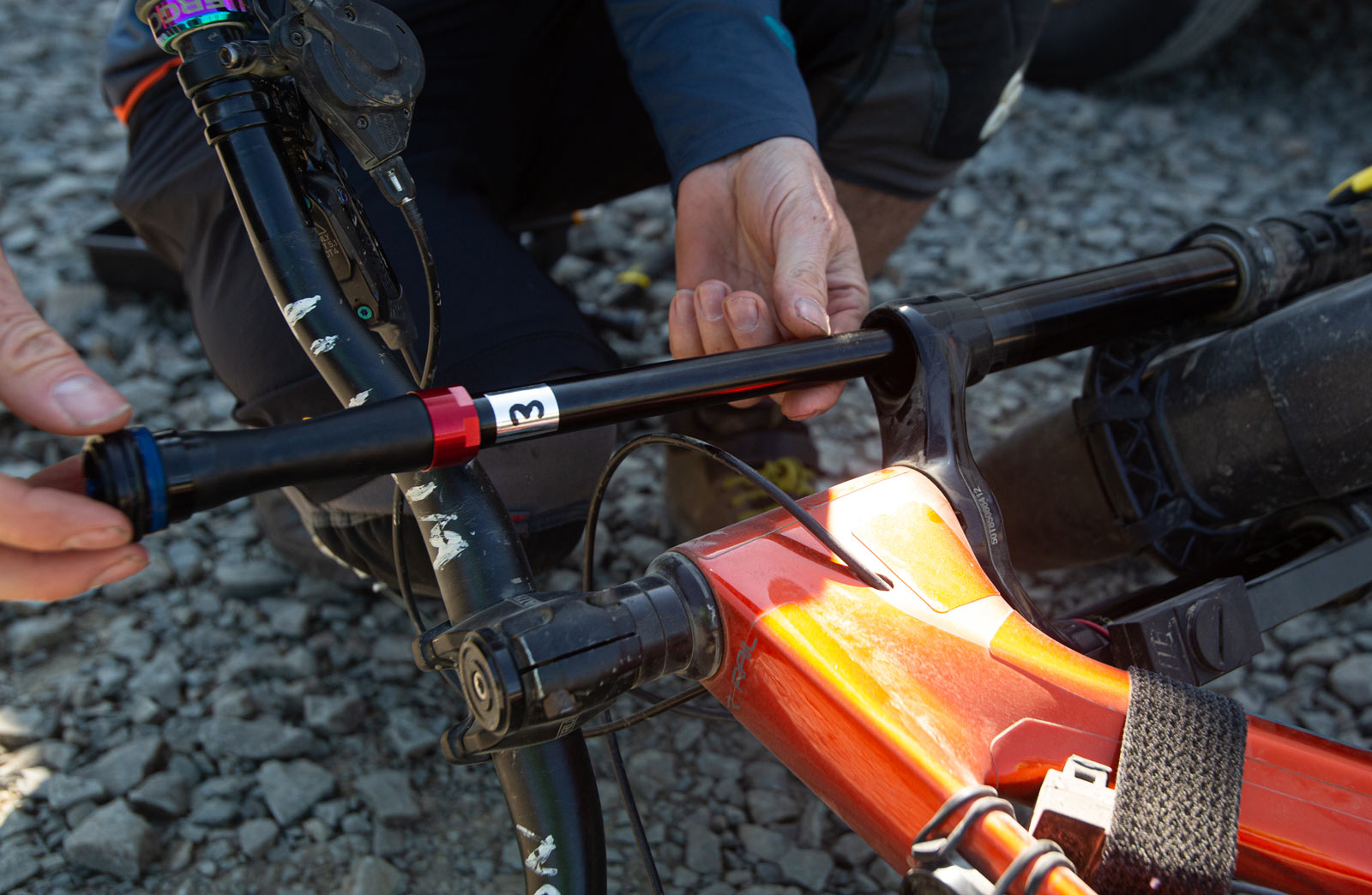
EDITOR’S CHOICE – NSR Racing Custom Piston Kits
This autumn, I was lucky enough to spend a day with Adrian Bedford, founder and fabricator at Swarf Cycles. Adrian has recently partnered with Nigel Reeve of NSR-Racing to set up a custom suspension tuning service here in the Tweed Valley, Scotland. Adrian and I spent a day lapping the same 3-minute downhill track, testing three different damper cartridges inside a RockShox Lyrik fork chassis (shuttle-assisted, of course).

We tested three different dampers; the Charger 2.1 RC, the Charger 2.1 RC2, and Adrian’s custom NSR-Racing damper, tuned with a custom piston kit for the lighter, less aggressive rider. We collected three data sets; lap times (again, using Freelap), Motion Instruments Telemetry, and immediate post-run verbal feedback. The rider (me) was blind as to which damper they were riding, thanks to the clever placement of a highly technical milk bottle top.
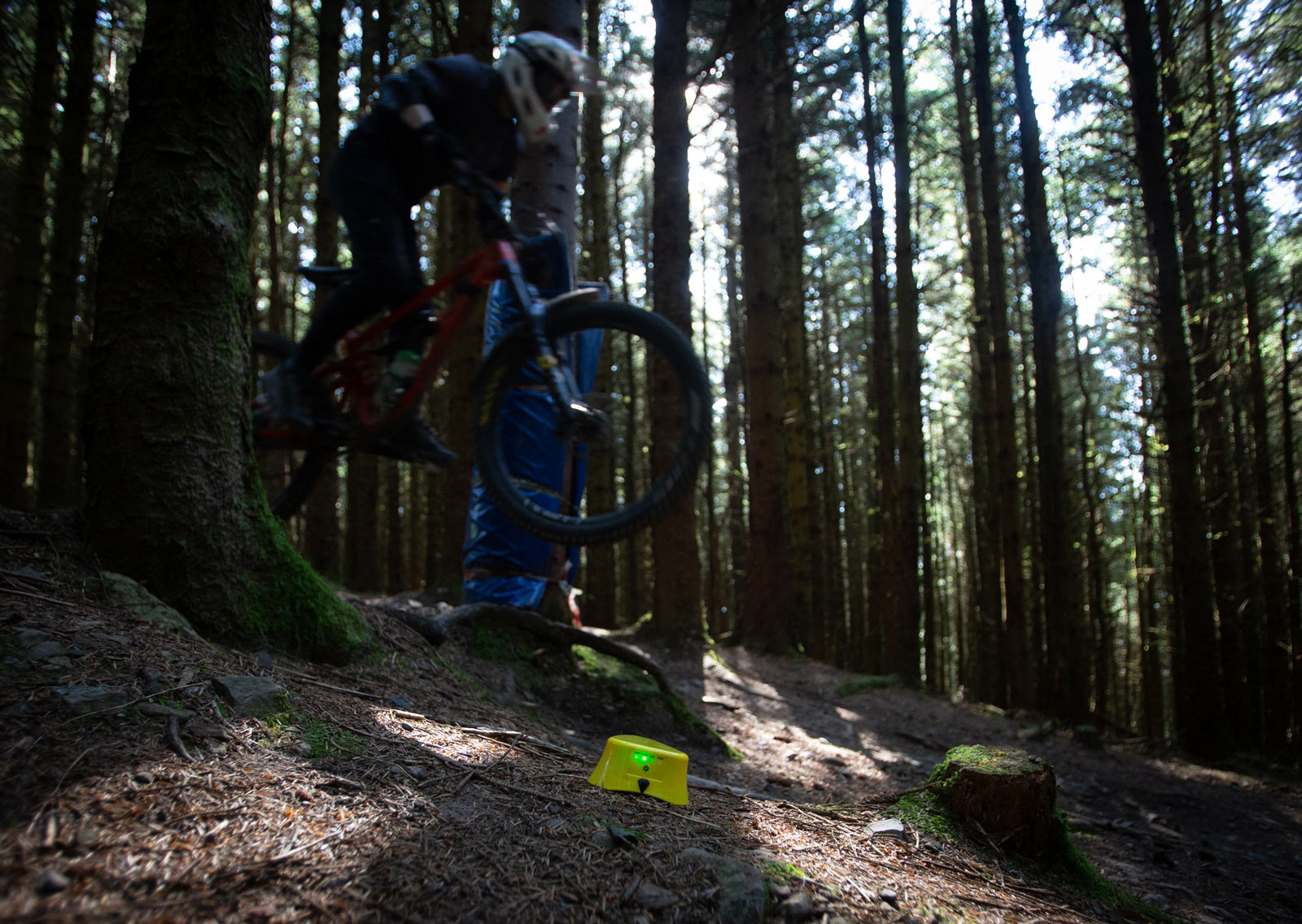
Honestly, the timing results definitely weren’t anything to write home about. On average, the NSR-Racing damper did come out on top, but only by one second. Far more interesting was the rider feedback. There were two very important areas in which the NSR damper won hands down; those were overall ride comfort, and how safe and predictable the ride felt. While a fair bit of arm pump was experienced while riding the other two dampers, it was almost non-existent at the bottom of each run with the NSR damper.

So, while the measly 1 second advantage it offered over a 3 minute race run wasn’t all that exciting, I would argue that over a fifteen minute enduro race stage where fatigue plays a much bigger role, that time difference would likely be disproportionately increased. The further down the track I can stay fresh and unhindered by arm pump and general fatigue, the longer I can continue riding at full pace.
As you might expect, this kind of upgrade isn’t cheap. A custom piston kit for a RockShox fork will set you back £350; the same service for a rear shock is £250 (that’s for air or coil). Based on my experience, it could very well be worth it. If you’re looking for the edge on your competition for next year’s race season, and you’ve relatively deep pockets, get both ends done. If money was no object, I certainly would. Spending that amount of cash on a custom damper tune to suit my weight, height and riding style would bring me far more joy (and performance gains) than some equivalently priced lightweight titanium stem and pedals ever could. You can learn more about Adrian’s custom tuned damper services here.
MOUNTAIN BIKE SHOES
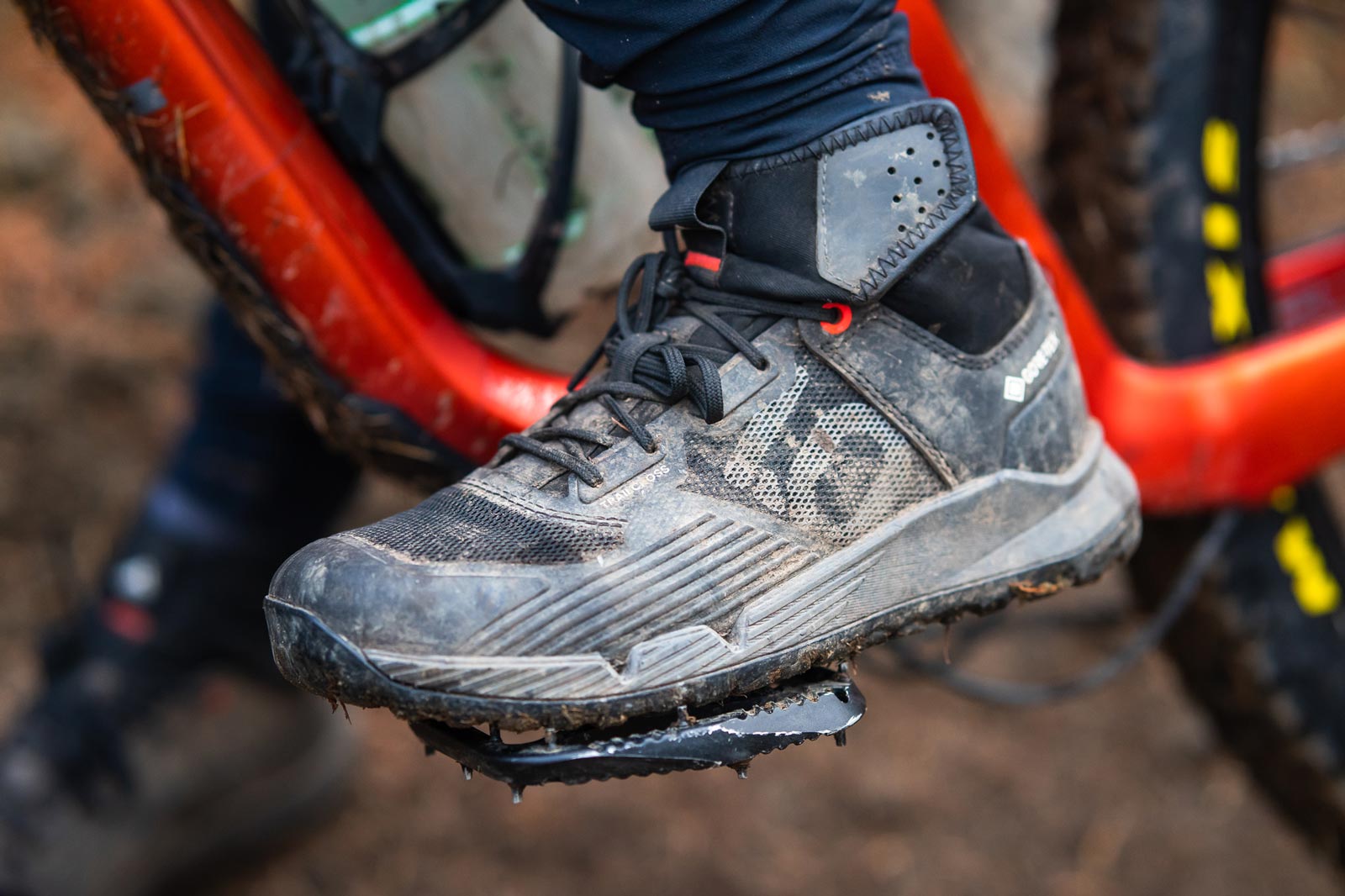
EDITOR’S CHOICE – FiveTen TrailCross Gore-Tex MTB Shoes
Of all the products, across all categories, I’ve tested this year, the absolute stand out would have to be the FiveTen TrailCross Gore-Tex MTB Shoes. FiveTen has combined their tacky rubber soles with a Gore-Tex lined waterproof upper material with the addition of a gaiter-style cuff at the ankle.
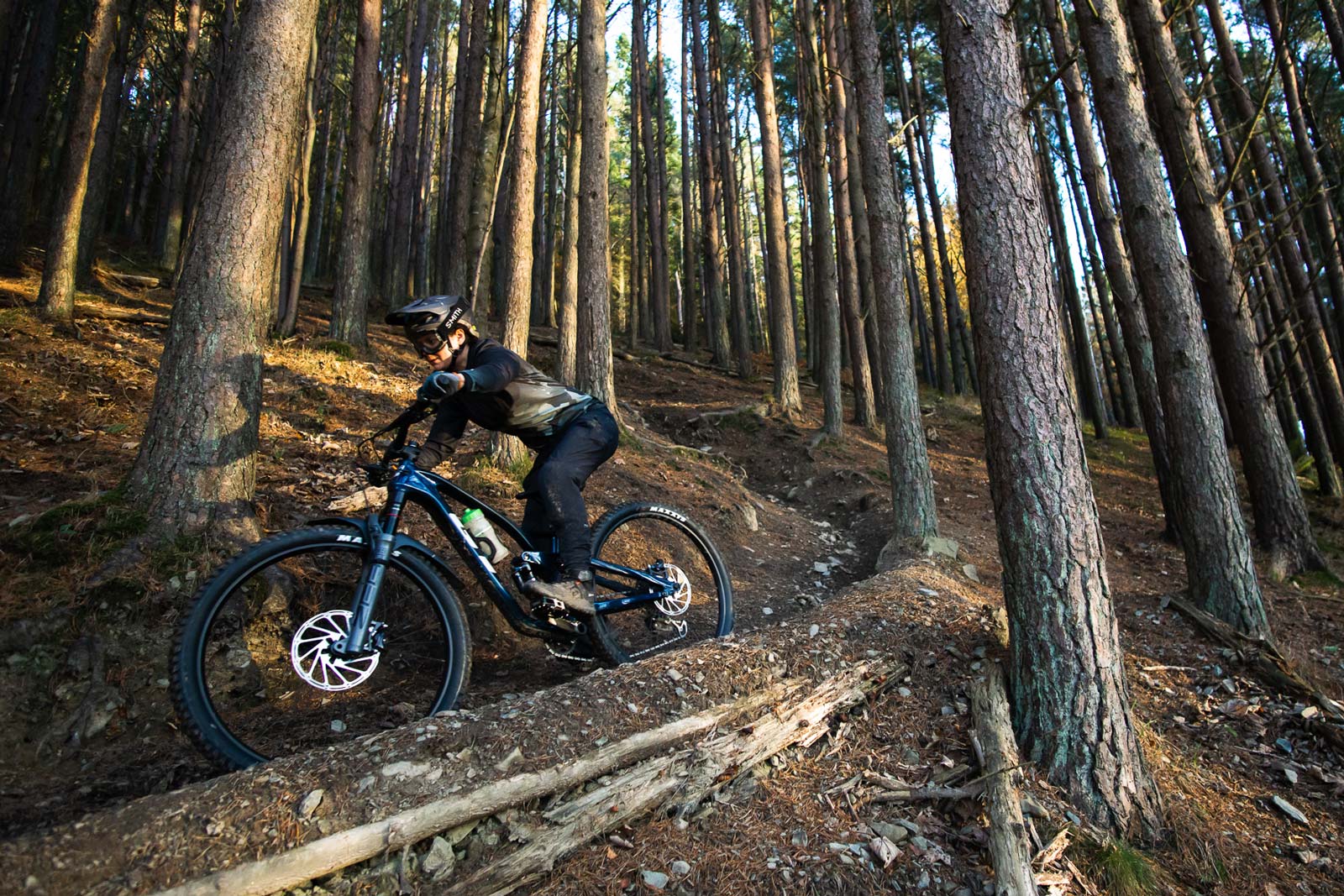
On numerous occasions, I’ve found myself to be that one smug-as member of the group who doesn’t have cold, wet feet; not because I’ve quickly steered around every puddle harbored by the trail, but because these winter riding shoes actually do what they’re meant to. They’re not without their limitations, though. If you wrap the gaiter over the cuff of your trail pants, not vice-versa, when they trail pants get wet so do your socks, and low and behold, so do your feet. So, dress yourselves properly guys (face palm).
The FiveTen TrailCross Gore-Tex MTB Shoes will continue to be my go-to throughout winter. While they’re keeping my feet warm and dry, they’re also providing a very reassuring and consistent shoe-pedal connection, even now it’s pretty cold out there. Who knows how sticky they’ll get when summer comes around. Pick up a pair for $200 USD at REI.
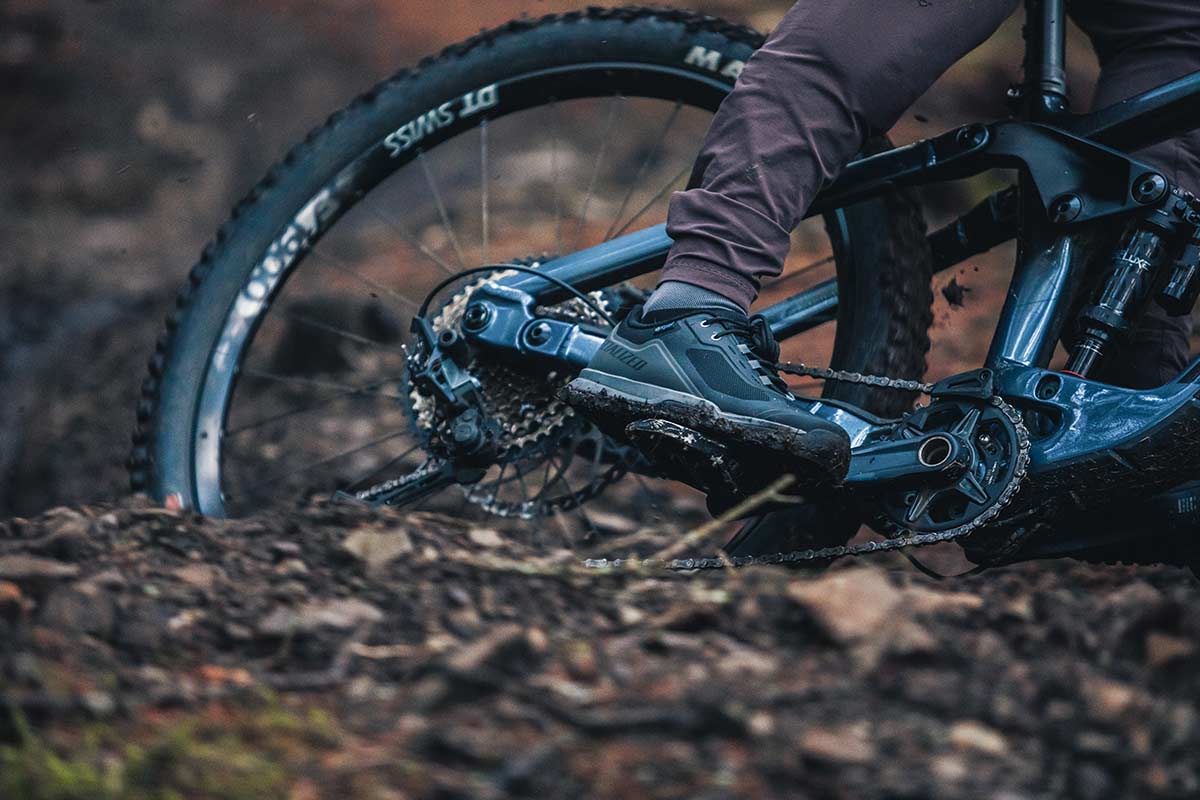
HONORABLE MENTION – Specialized RIME Flats
Runner up is the Specialized RIME Flat, a great session shoe for mountain biking. This more casual footwear still gets Specialized’s super tacky 3rd generation SlipNot rubber seen on their dedicated trail riding shoe, the 2FO Roost, but in a more walking-friendly package. The outsole gets a deep tread pattern at the toe and heel region; that paired with the supple mid-sole makes the RIME great for pushing back up trails when sessioning features.
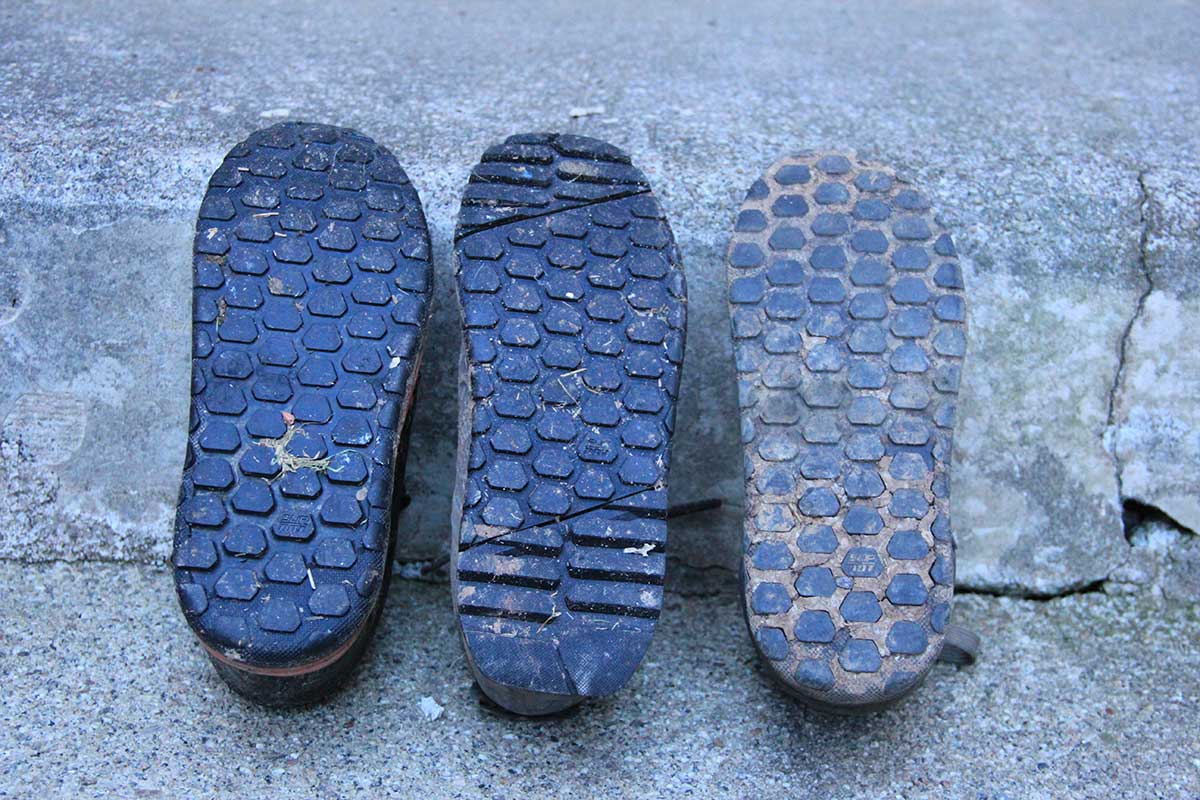
Though the 2FO Canvas and 2FO DH flat pedal shoes are the more performance oriented options, I actually preferred the ride feel of the Specialized RIME, owing to its more flexible sole that allowed for better feedback on the terrain and with it more control. Pick up a pair for $130 USD at Backcountry.
TIRE INSERTS
EDITOR’S CHOICE – Cushcore Pro
Now to the single best component upgrade I’ve encountered all year. I have reviewed a few inserts this season (others include Nukeproof ARD and RockStop), but by far and away the best of the lot was CushCore Pro. It may surprise you that puncture protection wasn’t what made this product stand out for me… in fact, I would warn against switching to lighter casing tires if you do decide to make the upgrade (details on that in our CushCore Pro full review here).
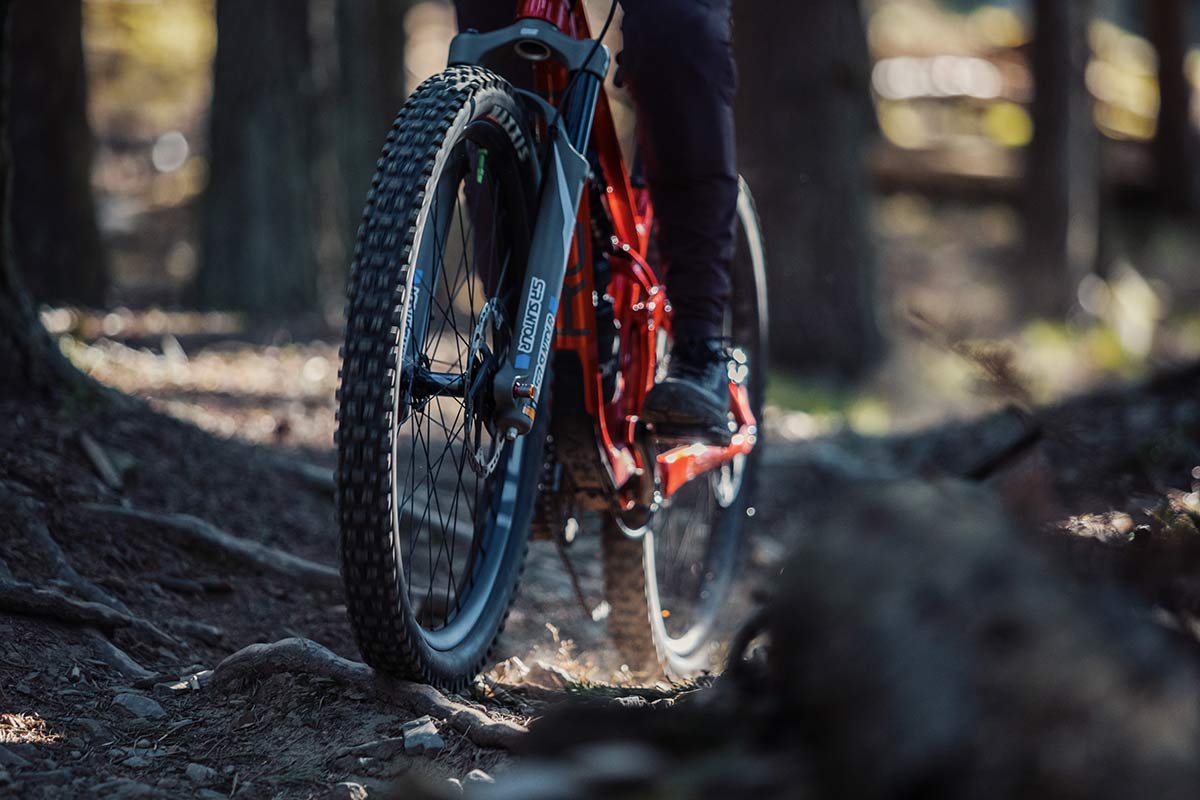
The CushCore Pro inserts allowed me to run crazy low tire pressures for unfathomable grip (12 PSI… yep). And, sticking with Double Down casing tires, all without risking a pinch flat puncture, or tire roll. The absolute standout feature though, was the vibration damping effect, and the significantly reduced fatigue that came with it. If arm pump is a consistent and irritating feature of your rides, you should definitely consider these (you should also read about how you can optimize your brake setup to reduce arm pump here). Pick up a pair of CushCore Pro tire inserts on Amazon for £159.99.
HONORABLE MENTION – Nukeproof ARD
More affordable and much easier to install is the Nukeproof ARD tire insert, aka, Advanced Rim Defence. Available at Chain Reaction Cycles now for £34.99 per pair (including tubeless valves), I include them here for their incredible value for money.
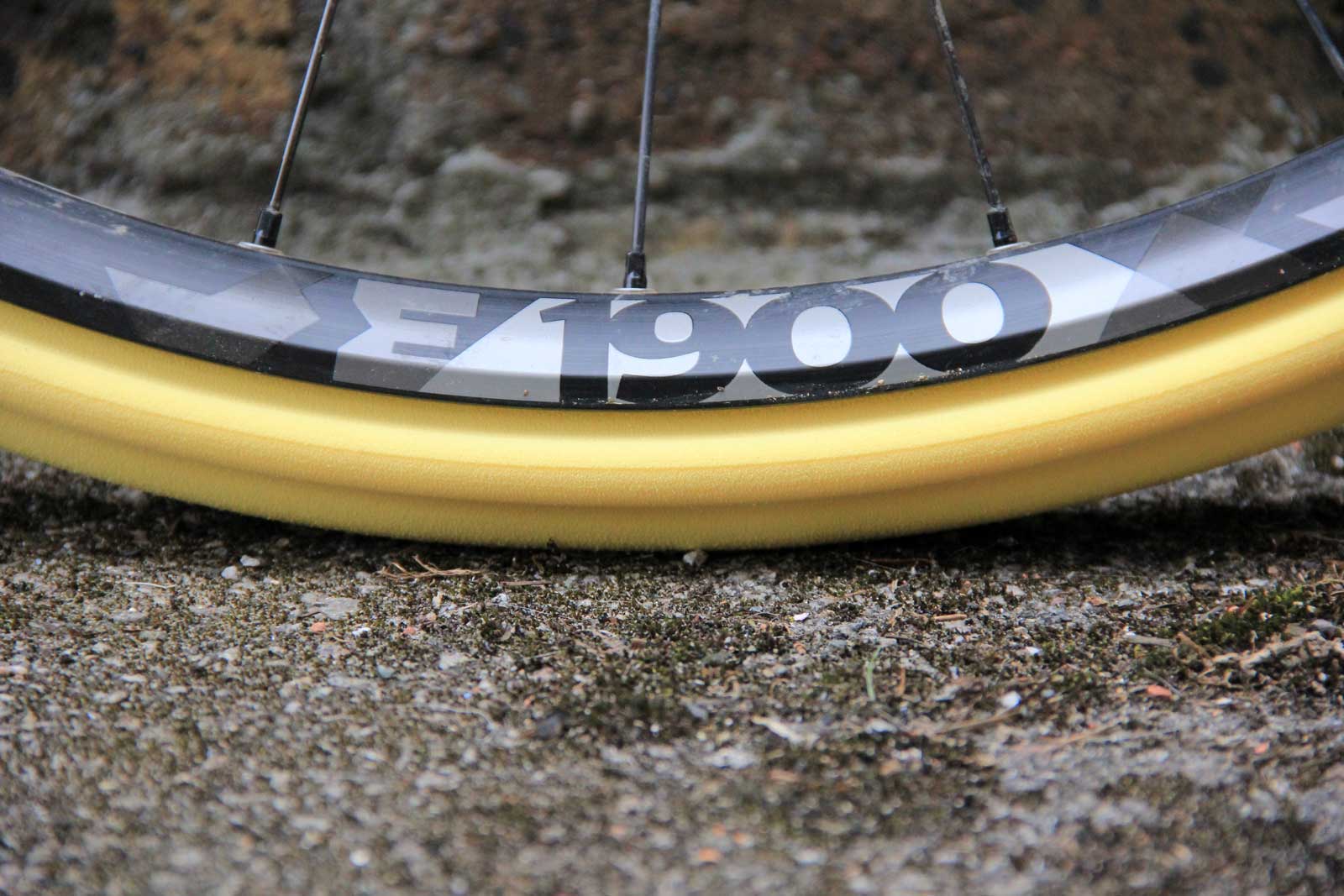
They don’t offer the quite the same performance advantages as the CushCore Pro; in particular they don’t seem to offer quite the same degree of fatigue-reducing vibration damping described earlier, but they do offer good sidewall support and do allow you to drop the tire pressure for improved grip without the risk of a pinch flat. At least, that is what my experience on a Michelin Wild Enduro Rear tire would suggest. They’re pretty light, too, weighing just 152g per insert. That’s notably lighter than the CushCore Pro insert, pretty important when you consider this is adding to rotational weight. Read the Nukeproof ARD review here.
MTB TIRES
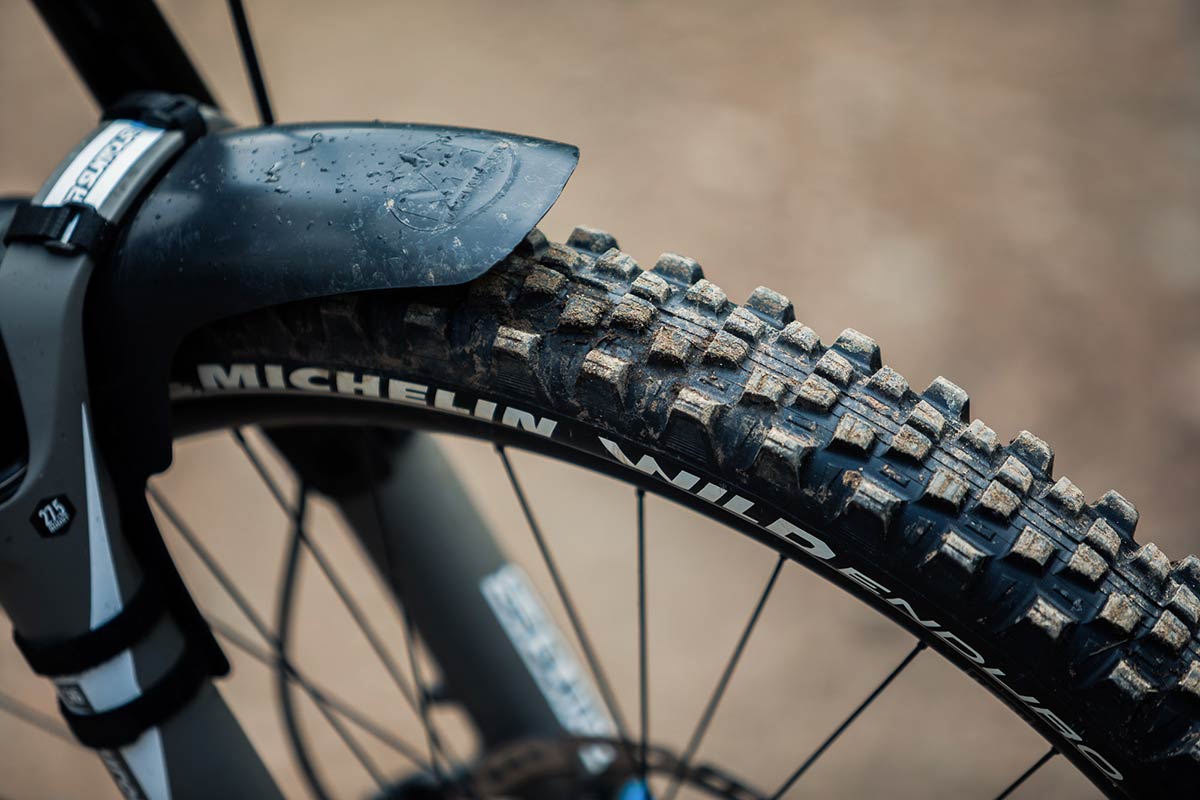
EDITOR’S CHOICE – Michelin Wild Enduro Front GUM-X3D
“My first few rides on this tire were wet and sloppy, on the steep, soft, slippery, sometimes off camber, muddy corners the Tweed Valley is famous for. A great test for the open and aggressive tread pattern of the Michelin Wild Enduro Front Tire. It is in these conditions where the tire excels, delivering unprecedented levels of cornering grip. As you put the tire on its edge, you can feel, and hear, the side knobs cut through the soft, top layer of greasy loam, biting the firmer terrain sitting just below the surface” – an excerpt from my review of the Michelin Wild Enduro Front GUM-X3D. Need I say more?
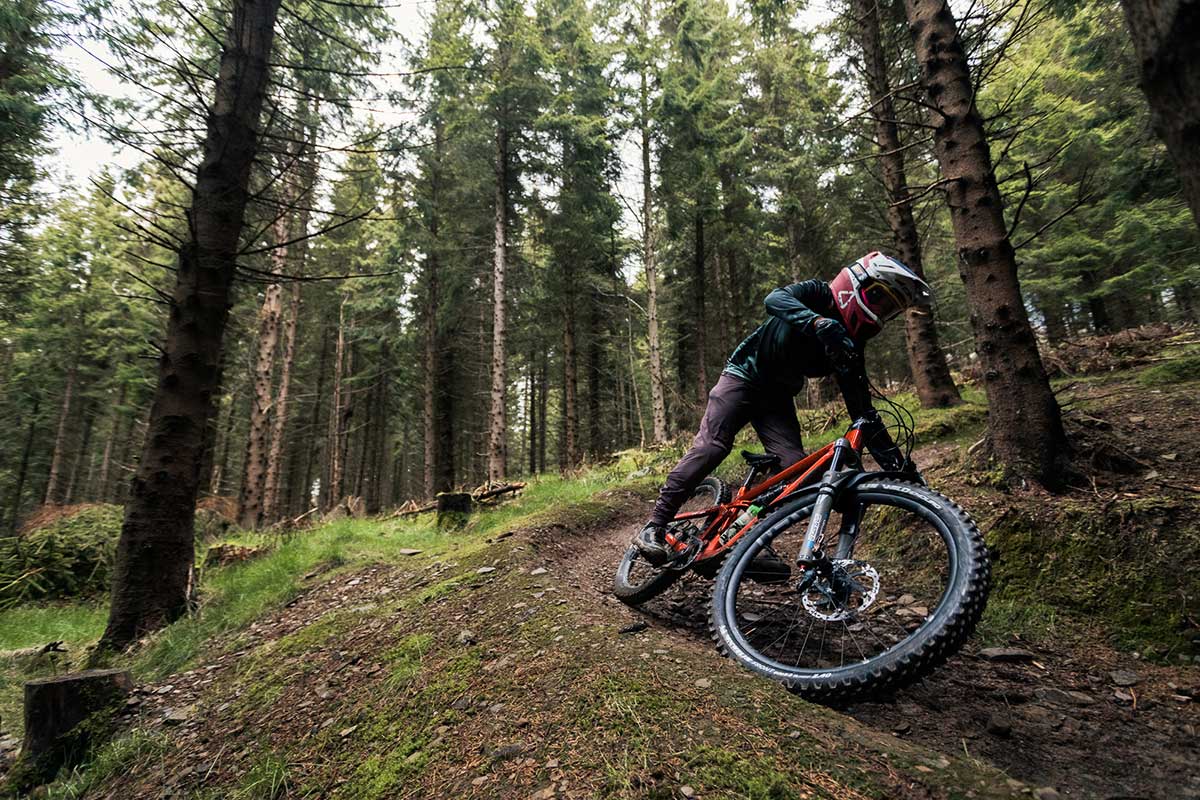
I recommend it as a solid option for UK Winter riding conditions. Pick up a Michelin Wild Enduro Front tire from Jenson USA for $54.99.
MTB HANDLEBAR

EDITOR’S CHOICE – OneUp Components Oval Carbon Bar
For my own personal bike, I like to run components that offer the most comfortable ride feel so that I can stay as fresh as possible on the longer descents of the Tweed Valley. One component I keep coming back to is the OneUp Carbon Bar, ovalised in the vertical plan to allow for a little flex. That compliance does a very good job of damping vibrations, all while maintain sufficient stiffness in the steering plane.
I’ve recommended this bar before, and I will do so again here. Not only is it super comfortable for riding hard, it’s also pretty lightweight at just 225g for the 35mm rise option at 800mm wide. I run the 25mm rise bar at its minimum trim width of 740mm, meaning I likely don’t get quite as much compliance out of it as other riders who prefer a wider bar would. Grab one for $139.50 USD at OneUp Components or at Competitive Cyclist.
MTB HELMET
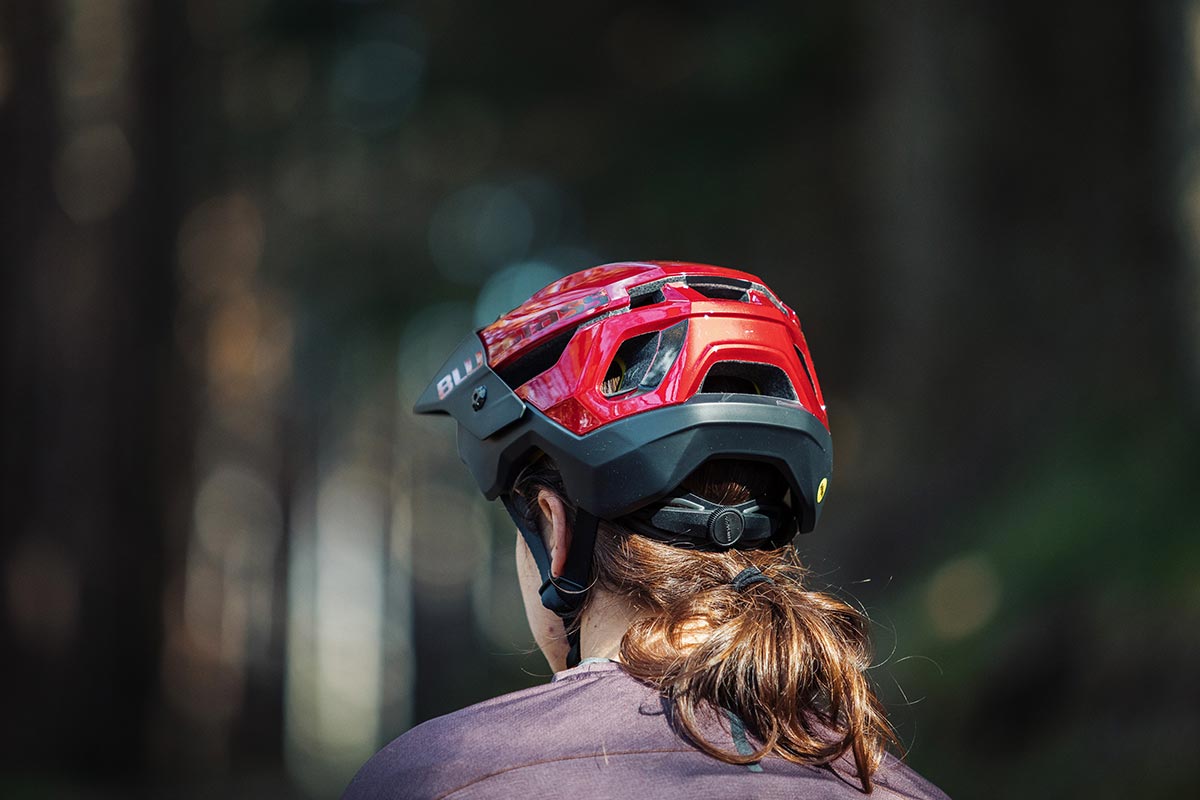
EDITOR’S CHOICE – Bluegrass Rogue Core MIPS
Of the four open-face trail helmets I’ve tested this year, the Bluegrass Rogue Core MIPS has to be my favorite. The Scott Stego Plus came close to beating it, but given that I had to file down the peak to make its integrated GoPro mount work, the Bluegrass option takes the top step.
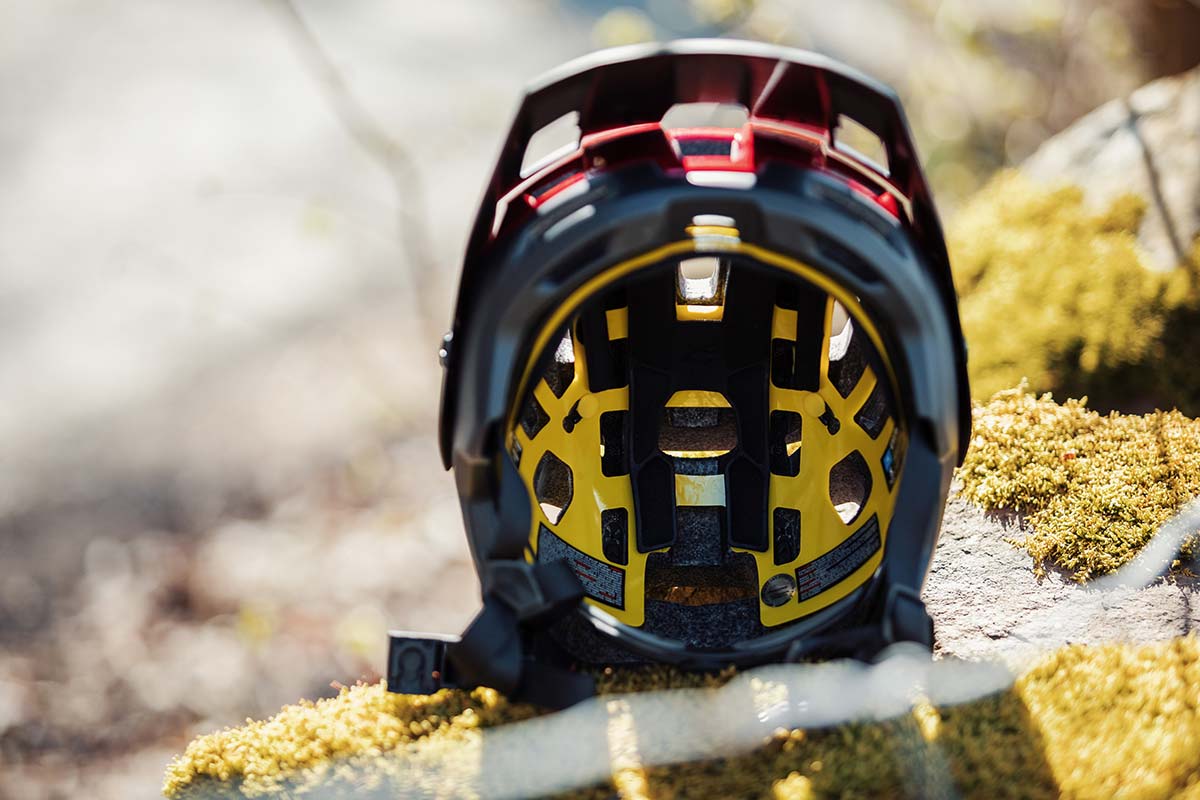
Considering the presence of the MIPS liner, Fidlock magnetic buckle and extended rear coverage, the Rogue Core comes in on the lighter end of the spectrum, weighting 355g in size small. We really liked the aesthetic of this lid, especially how the peak integrates with the main body, but the standout highlight was the fit. It was super comfortable to wear for longer trail rides with a reasonably absorbent comfort liner that coped well with sweat on hot summer days.
The Bluegrass Rogue Core saved my bacon, too. When I crashed hard into a pile of logs at a British National Round, I put a dent in the front end of the helmet. Thankfully, it is rare that we actually get to test the primary function of a helmet, but I’m pleased to report it did its job well. Pick one up for $180 USD at Bluegrass dealers.
MTB GOGGLES
EDITOR’S CHOICE – SMITH Squad
Another piece of kit that I keep coming back to is the SMITH Squad MTB Goggles. I’ve a pretty small face, and I find that most goggles I try end up squashing down on my nose to the point where my nostrils are forced to close resulting in obligatory mouth breathing. The SMITH Squad ones do this the least thanks to their low profile.
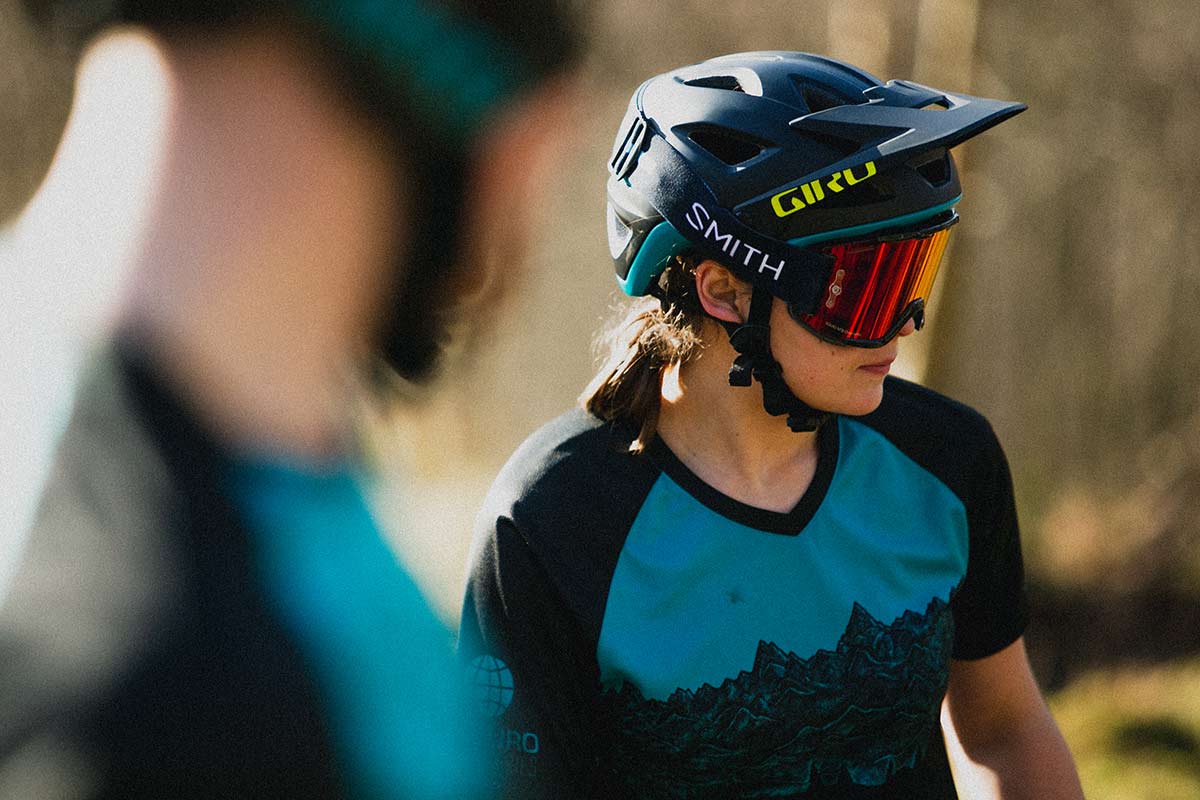
To be fair, this has a lot to do with how low the helmet sits on my forehead, and even my preferred Squad goggles do this sometimes, in particular with the Troy Lee Designs A3. If you’ve got a small face, the SMITH Squad goggles could be a great option for you. Pick up a set for at $120 USD at Backcountry.
PROTECTION
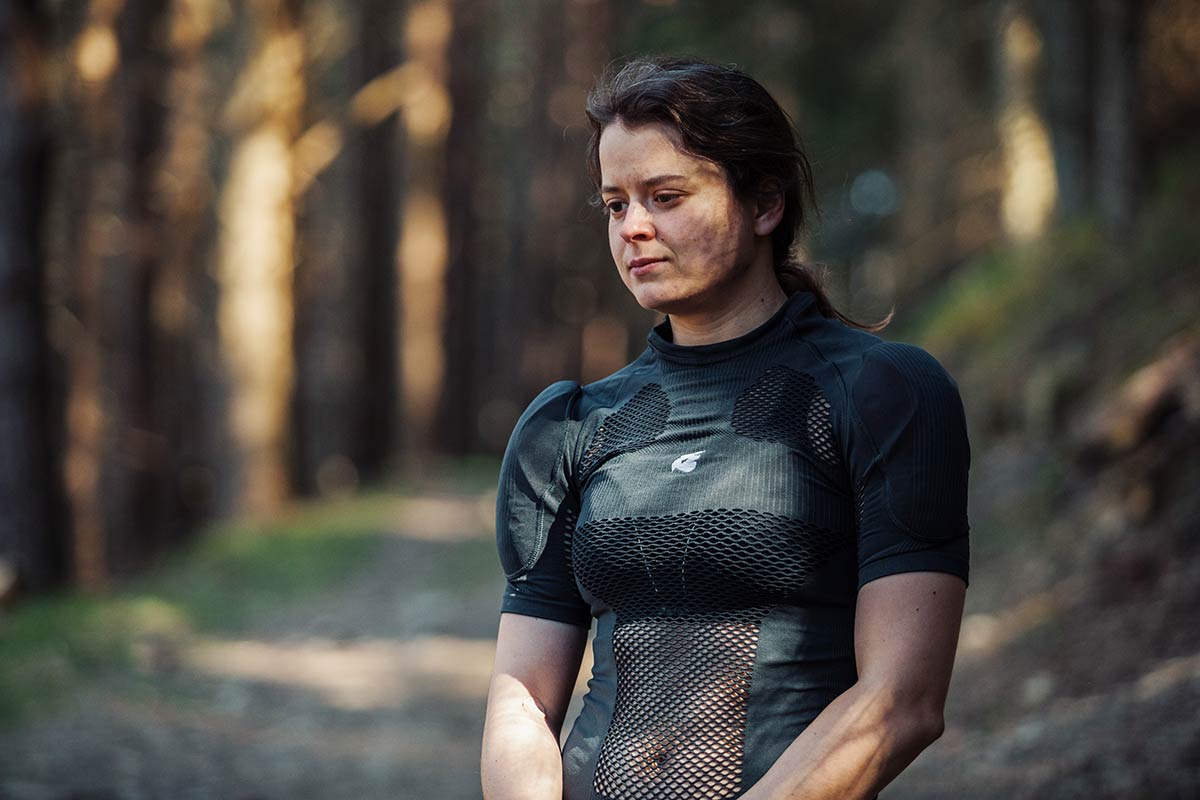
EDITOR’S CHOICE – Bluegrass Seamless D30 Lite Back and Shoulder Protection Vest
I dabbled in a bit of downhill racing this year, taking my trail bike to the slopes of Aonach Mor to race the Scottish Downhill Championships. The prospect of pinball rock gardens and motorway jumps was enough to make me reconsider my choice of protection. Of course, a Downhill Helmet and Back Protector were mandatory items, but my memory of Tahnee Seagrave’s AC Joint separation during the Scottish World Cup Round in 2019 meant there was no way I’d be racing without some kind of shoulder protection too.
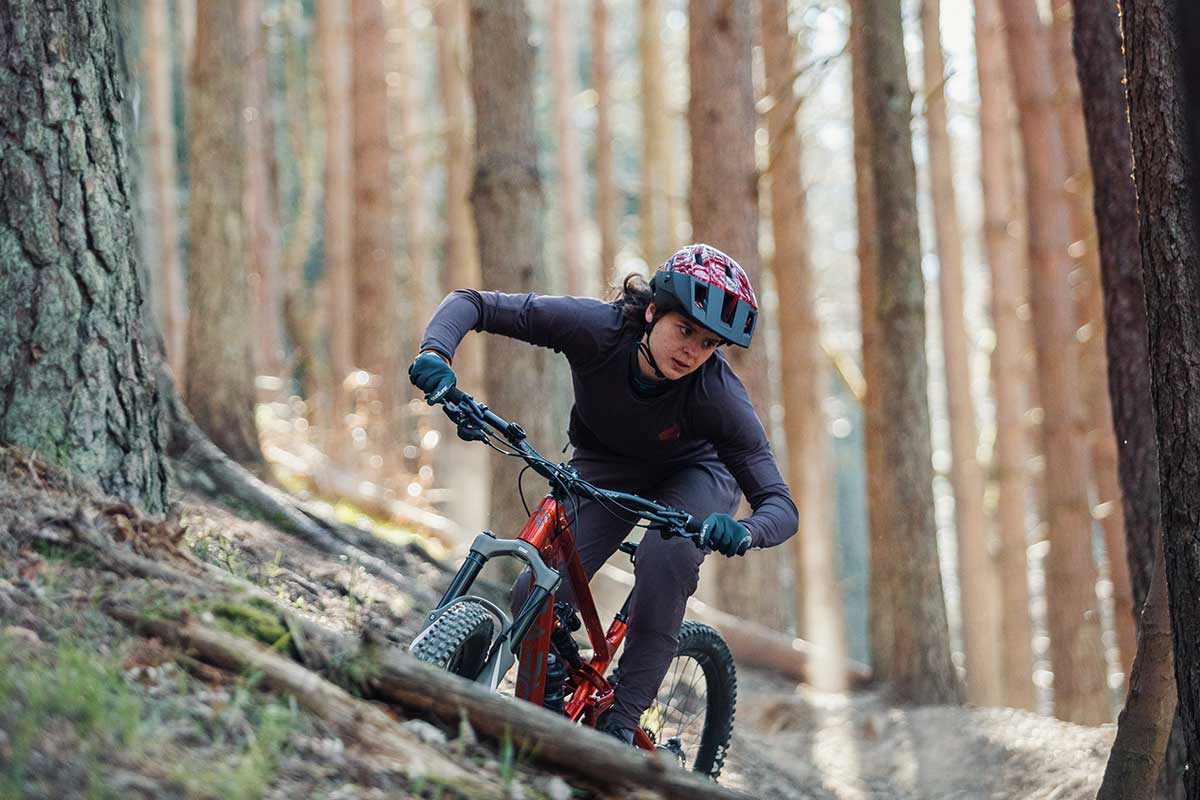
Luckily, I had the Bluegrass Seamless D3O Lite Back and Shoulder Protection Vest on test. This is a lightweight, minimalist option for riders who are looking for something comfortable enough to wear all day long, but that still offers the high-level of protection of D3O padding. The front of this elasticated vest is of a fishnet design that allows sweat to escape easily, making the front portion at least very breathable. If you’re also concerned with aesthetics, this could be a good option for you; it doesn’t quite make the rider look like they’re headed to the battlefield as some more heavy duty protection suits do.
Bluegrass also offer the D30 Lite Back Protection Vest (without the shoulder pads) – read the reviews on both here.
RIDING KIT
EDITOR’S CHOICE – SHORTS: Rapha Women’s Trail Liner Shorts
These are my most comfortable liner shorts to date. They are my go-to, and I wish I could afford five pairs of them. The chamois is firm at the sit bones, providing supportive cushioning where I need it most. It doesn’t squash down too much and it maintains a stiff platform across the way preventing undesirable folding in all the wrong places.
They’re also super breathable, with a thinner mesh material on the outside of the quads to allow heat and sweat to escape without too much hindrance. I really like the detail at the cuff too. Some bib shorts are guilty of being overly tight at the cuff, threatening to cut off blood supply to the lower leg. I experienced no such problems with the Rapha Trail Liner Shorts which see the same degree of elasticity right the way down the thigh.
At the inside of the cuff itself is a printed array of tiny silicone dots to keep the cuff secure in place, preventing it from moving up and down throughout the pedal stroke. This is much preferred to a thick continuous silicone strip seen on other bib shorts that can sometimes trigger skin irritation due to the lack of breathability in that area. It also makes for a lighter weight design. Get them from Rapha in sizes XXS-XL at $110 USD.
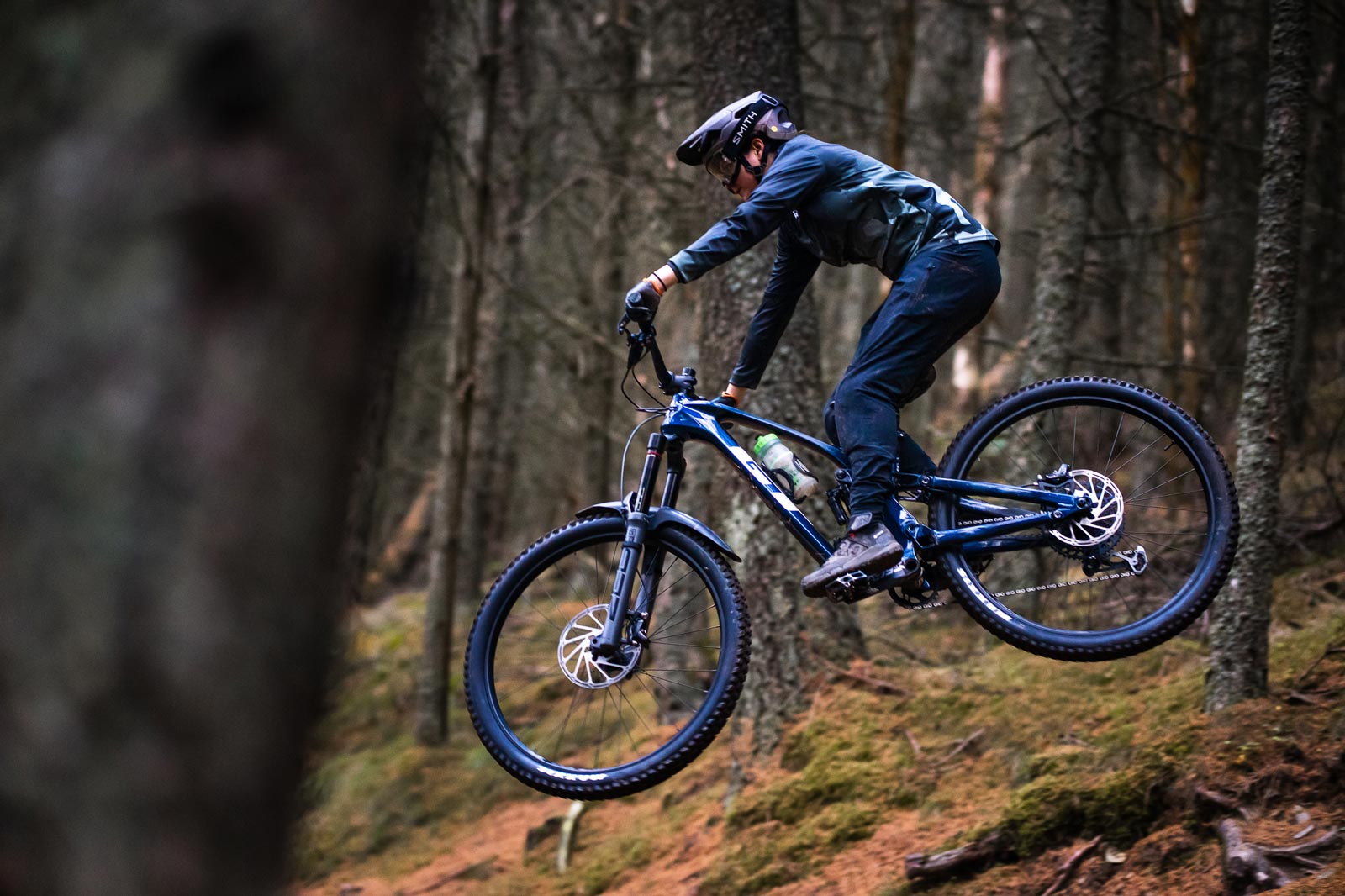
EDITOR’S CHOICE – MTB Pants: Specialized Trail-Series Pants
Featured heavily throughout this post are the Specialized Trail Series Pants, so you’ll not be at all surprised to see them listed here as my Editor’s Choice Winners. Another one of my go-to pieces of kit, these MTB Pants have a well-thought through well-executed design. A 4-Way stretch fabric (thicker than most) allows for great freedom of movement, capacity for very chunky knee pads, with a taper to the ankle to keep things neat and tidy, preventing material getting hung up on a chainring or frame-strapped tools. See the Specialized Trail-Series Pants review here.
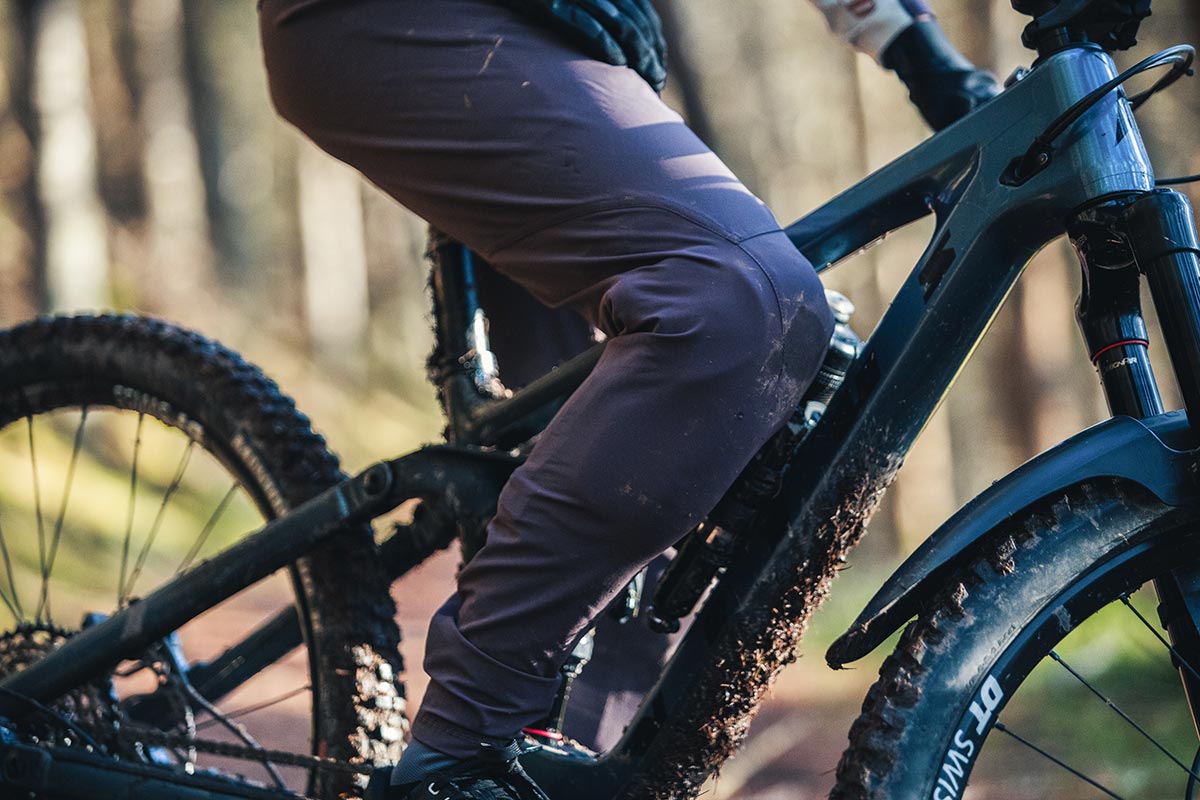
TOOLS
EDITOR’S CHOICE – Topeak Smartguage D2
This makes it into my Editor’s Choice Awards for 2021 as I simply couldn’t be without it. I check my tire pressures very regularly; it is part of my pre-ride check, and i’ll often check them mid-ride especially if I’ve noticed a bit of sealant has appeared on the rim. I will also drop my tire pressures mid-ride if I’m experimenting with a tire insert, or a new tire casing.
The Topeak Smartguage D2 makes it super easy. This digital pressure gauge works with Presta and Schrader valves, so works with tires and suspension, though only up to a maximum of 250 PSI. It can be tailored to give a read-out in PSI, Bar or kg/cm2. The Tune button allows you to slowly release air, one PSI at a time, giving you a predictive reading so you don’t accidentally dump too much air out.
We really like the fact that you can rotate the head, such that the display is always facing you no matter where the valve is pointing. Does it get gunked up with tire sealant? Yes, but very rarely. You can simply unscrew the cap of the head to clean it out. Pick one up for $53 at Amazon.
Here’s hoping you and yours have a wonderful holiday season, making your own experiences and planning for new ones! As always, thank you for reading Bikerumor!
Many more great products have passed though our hands this year, but this collection highlights the best I’ve seen or ridden. Full disclosure: Each of these products have been chosen purely on their performance and/or technological merits for the reasons described above. Under no circumstances were any of our selections paid for by their producers. Nor was any preference or favor given to advertisers or brands who bring us on trips. Our selections are for the most part (but not exclusively) limited to products that we’ve actually spent time riding/testing in person. So a brand’s willingness to invite Bikerumor to join a launch event, or to provide product samples does make it more likely that we will have considered their products, if only because we can share our real, firsthand experiences.
